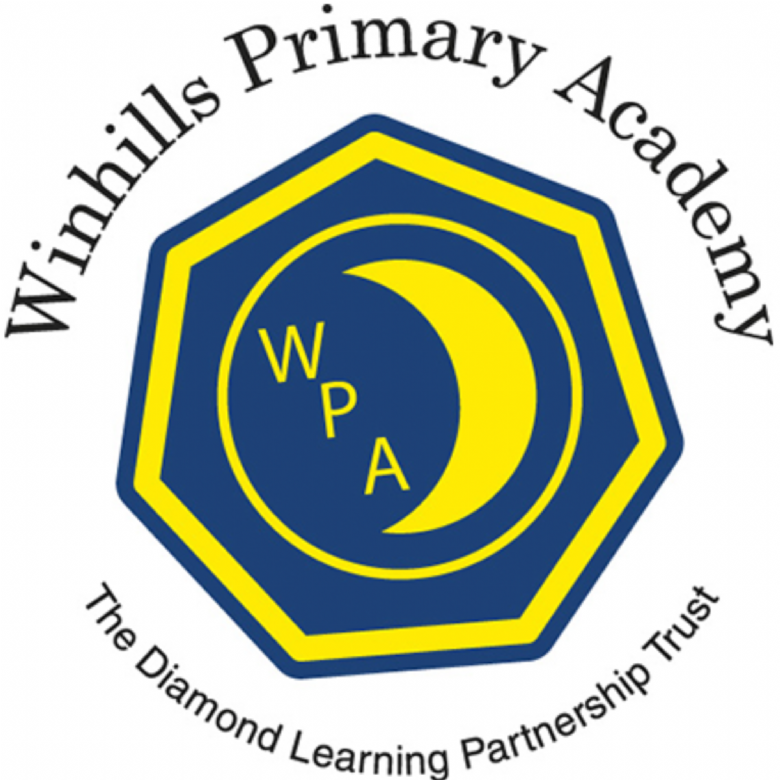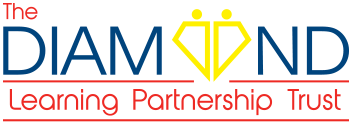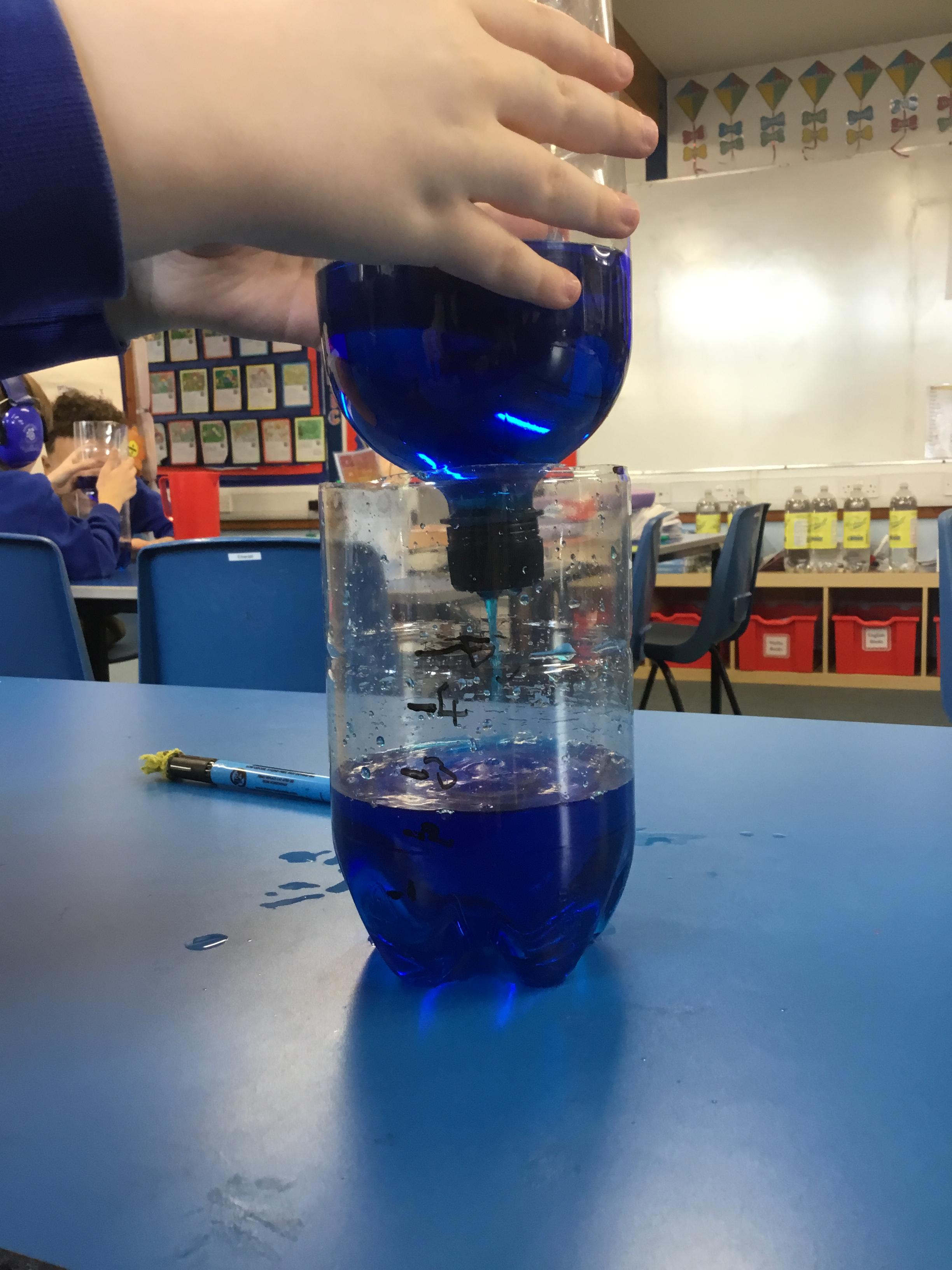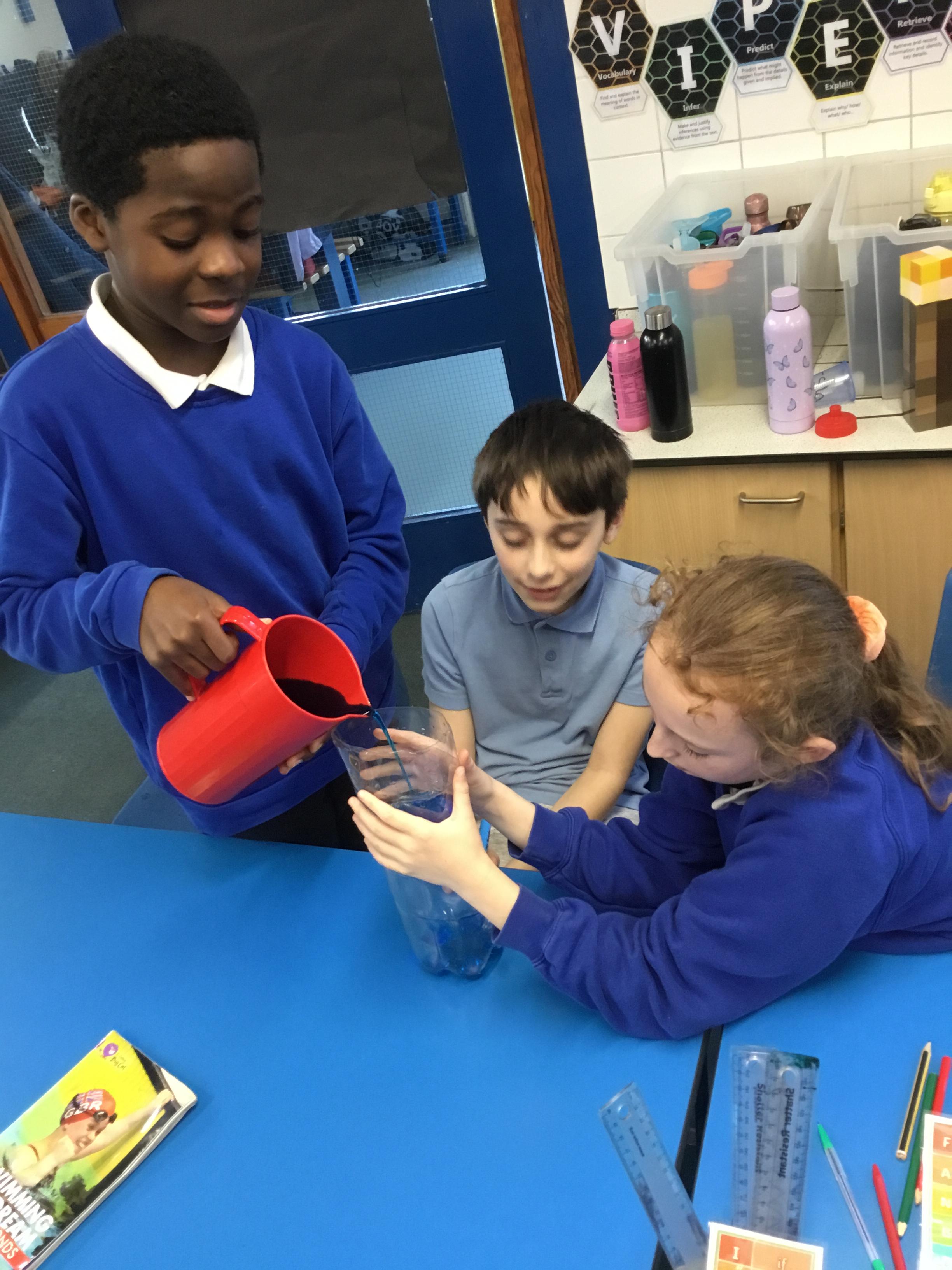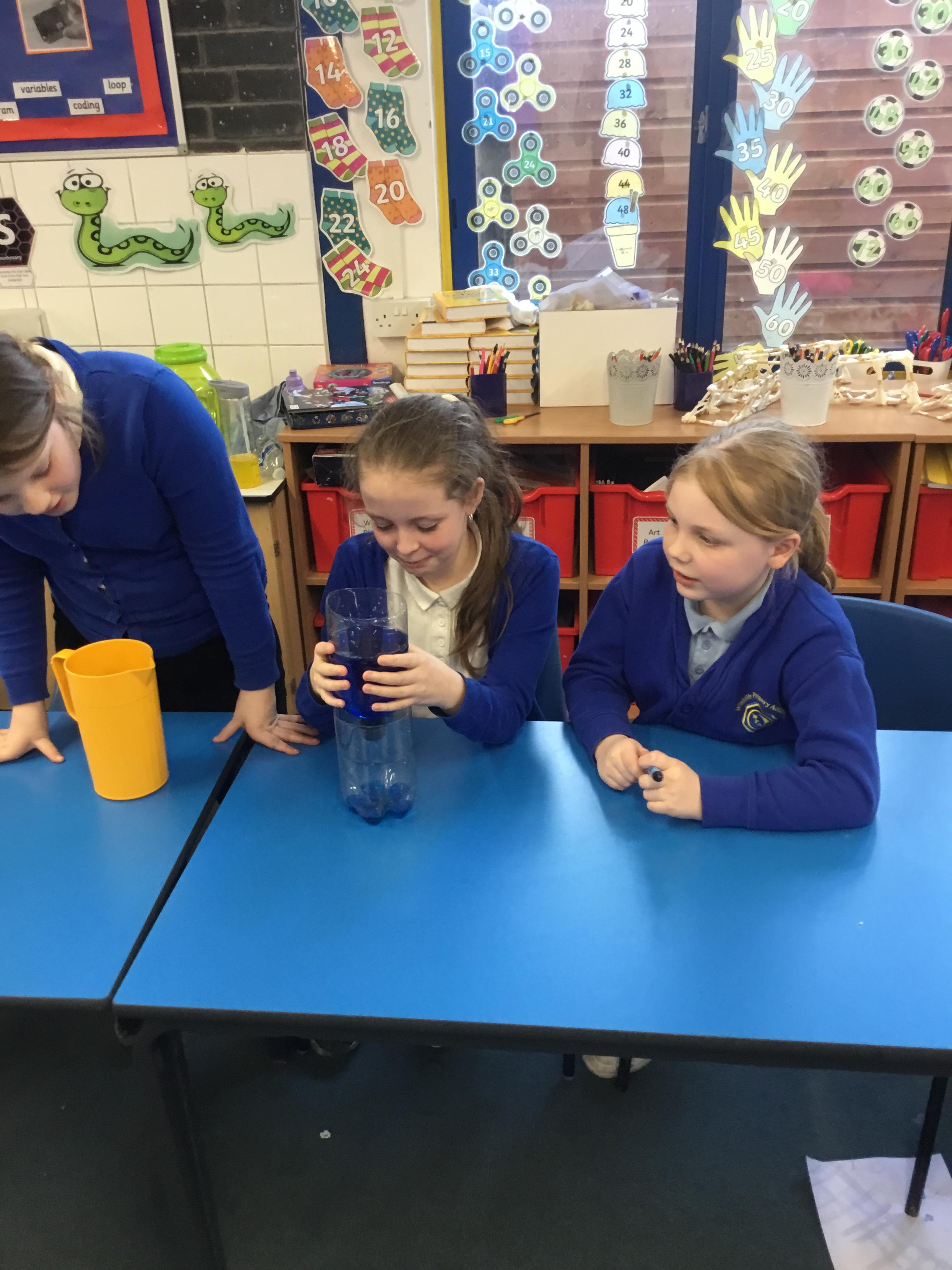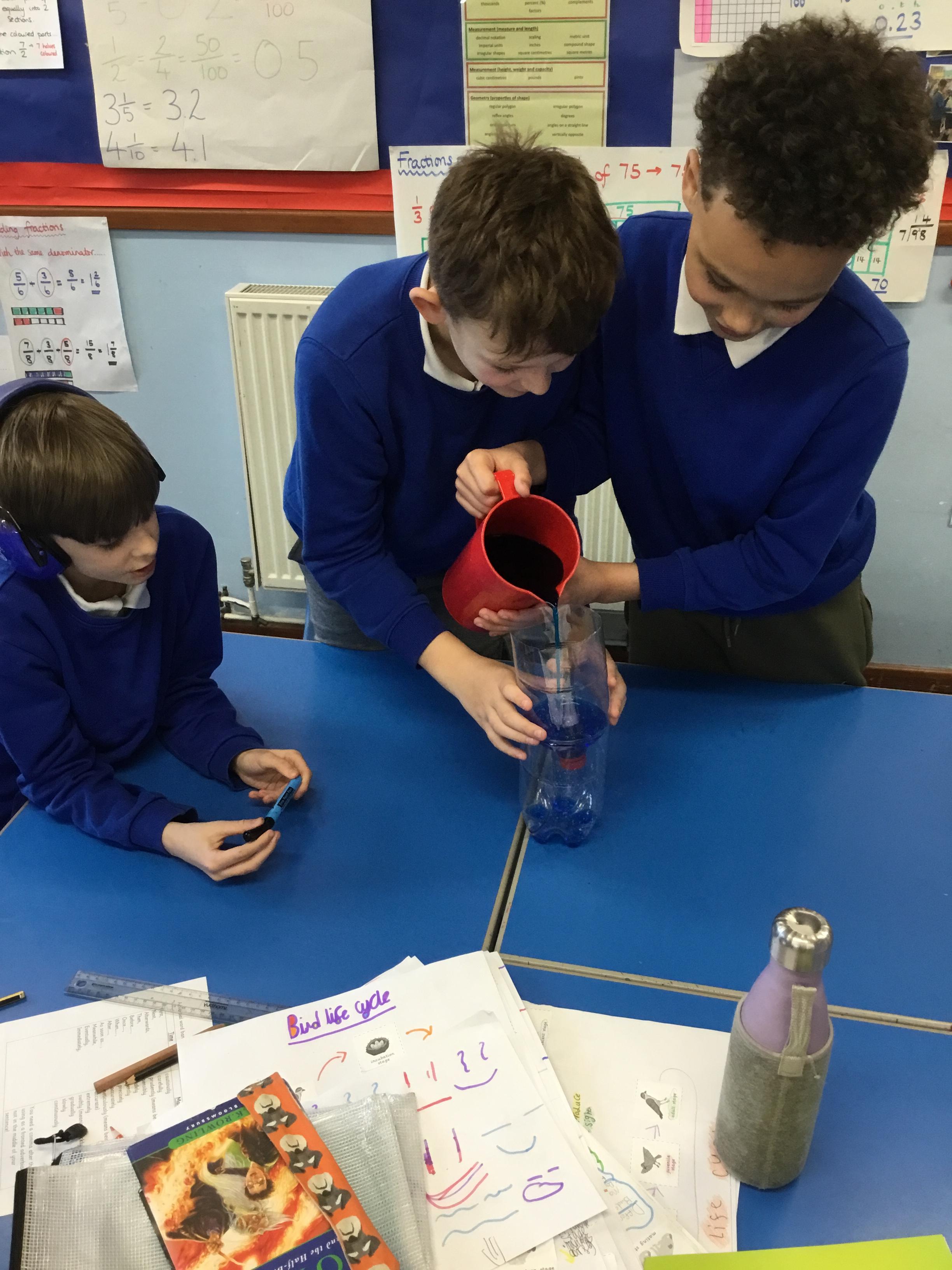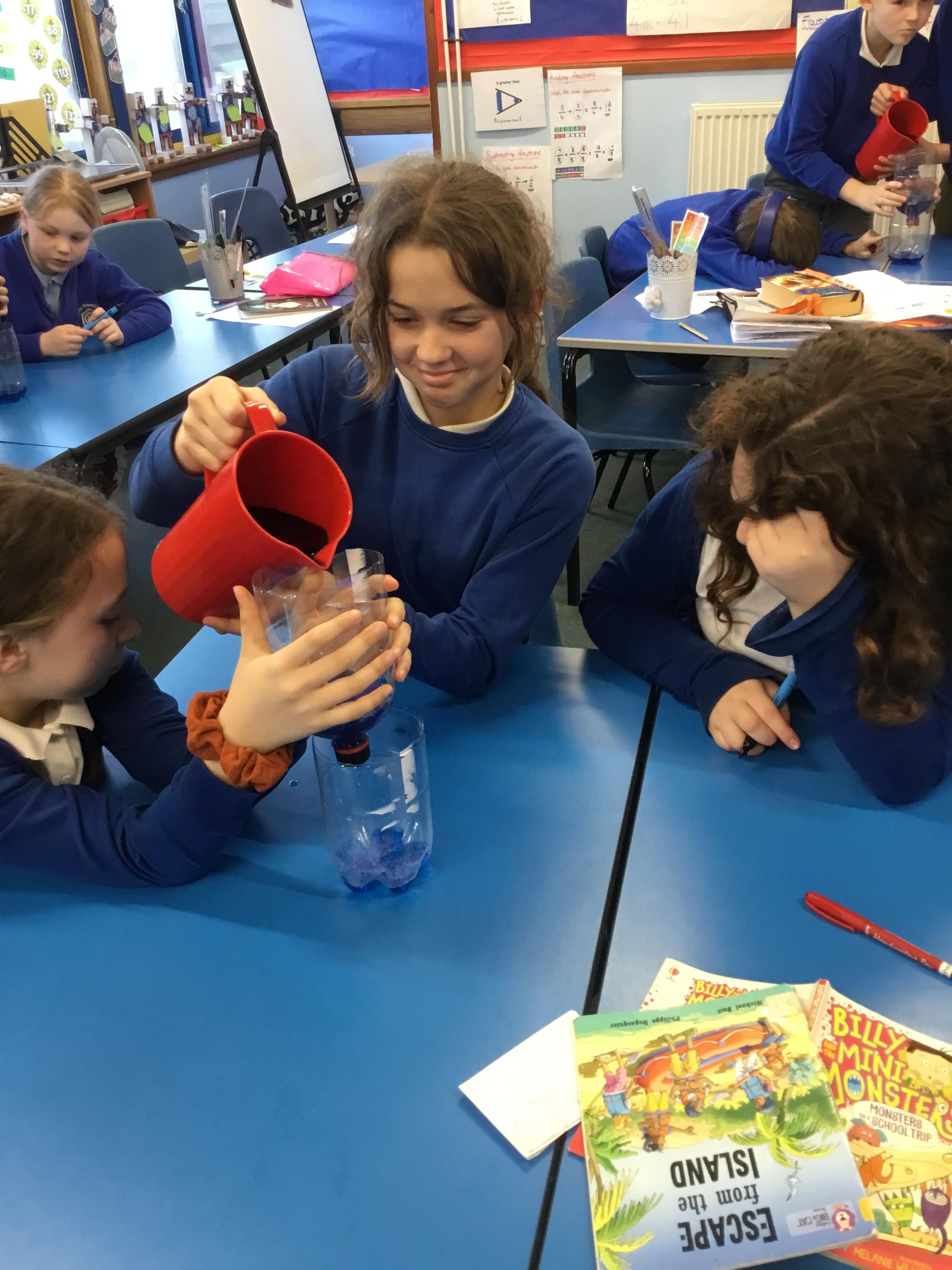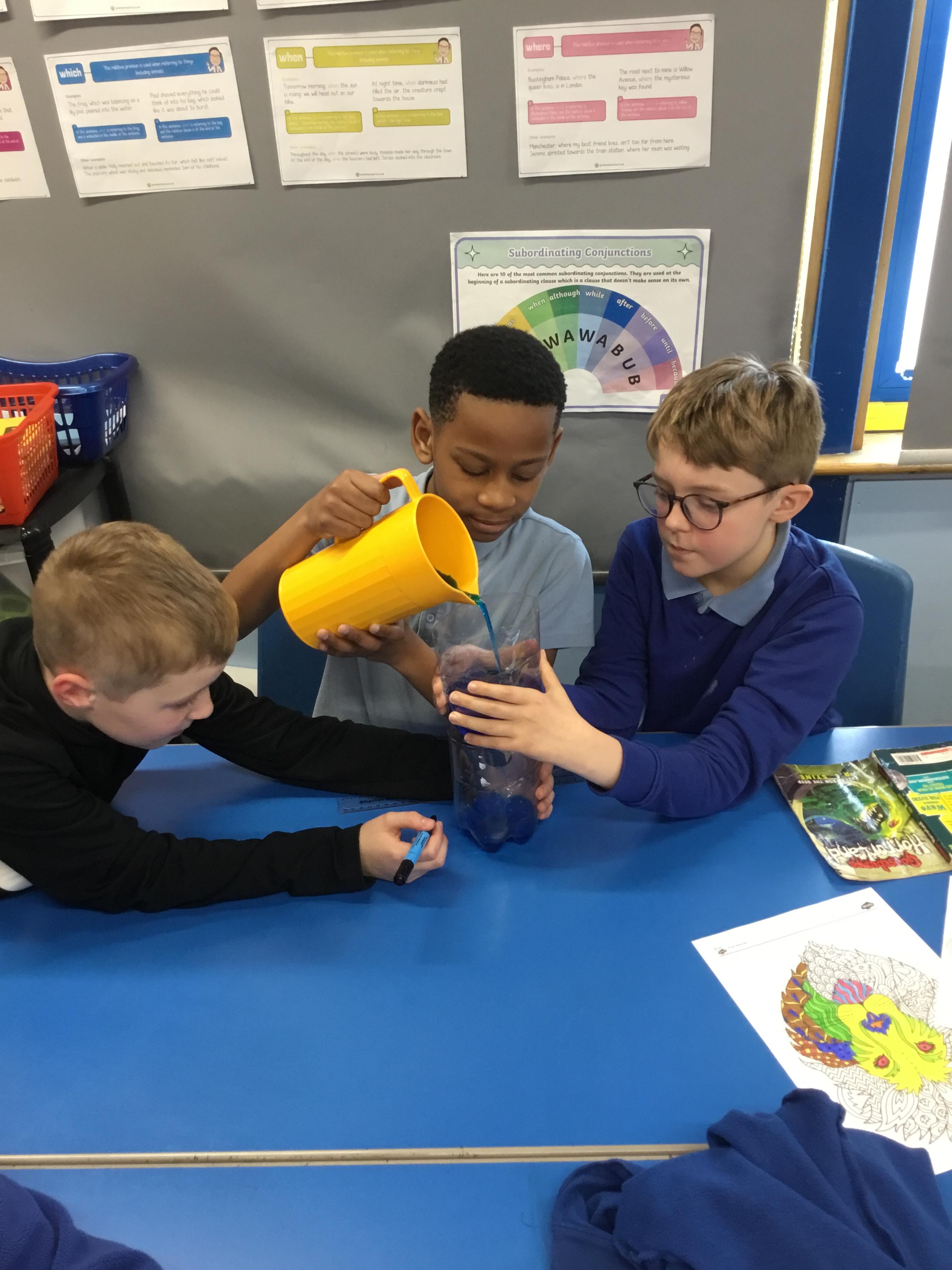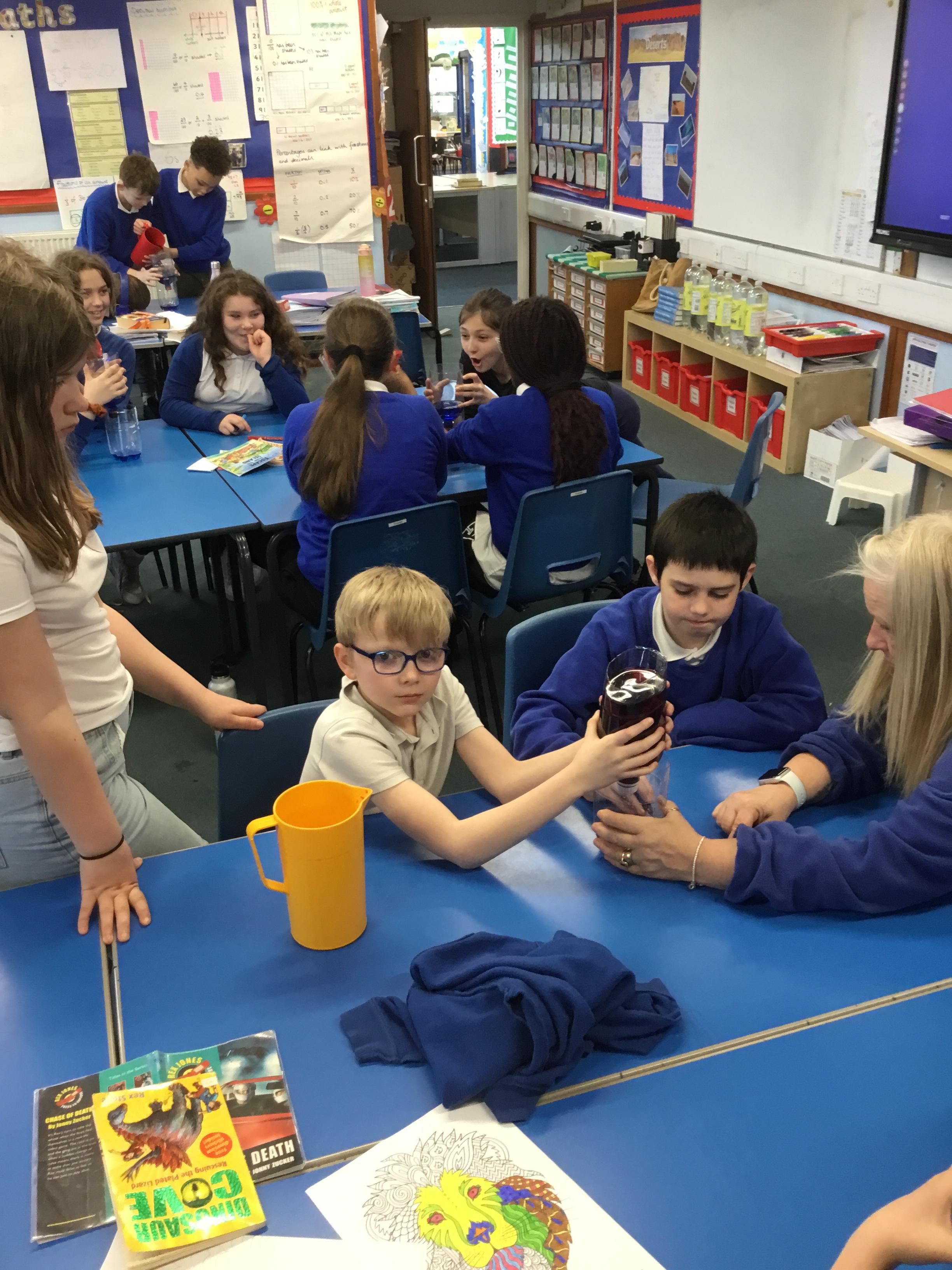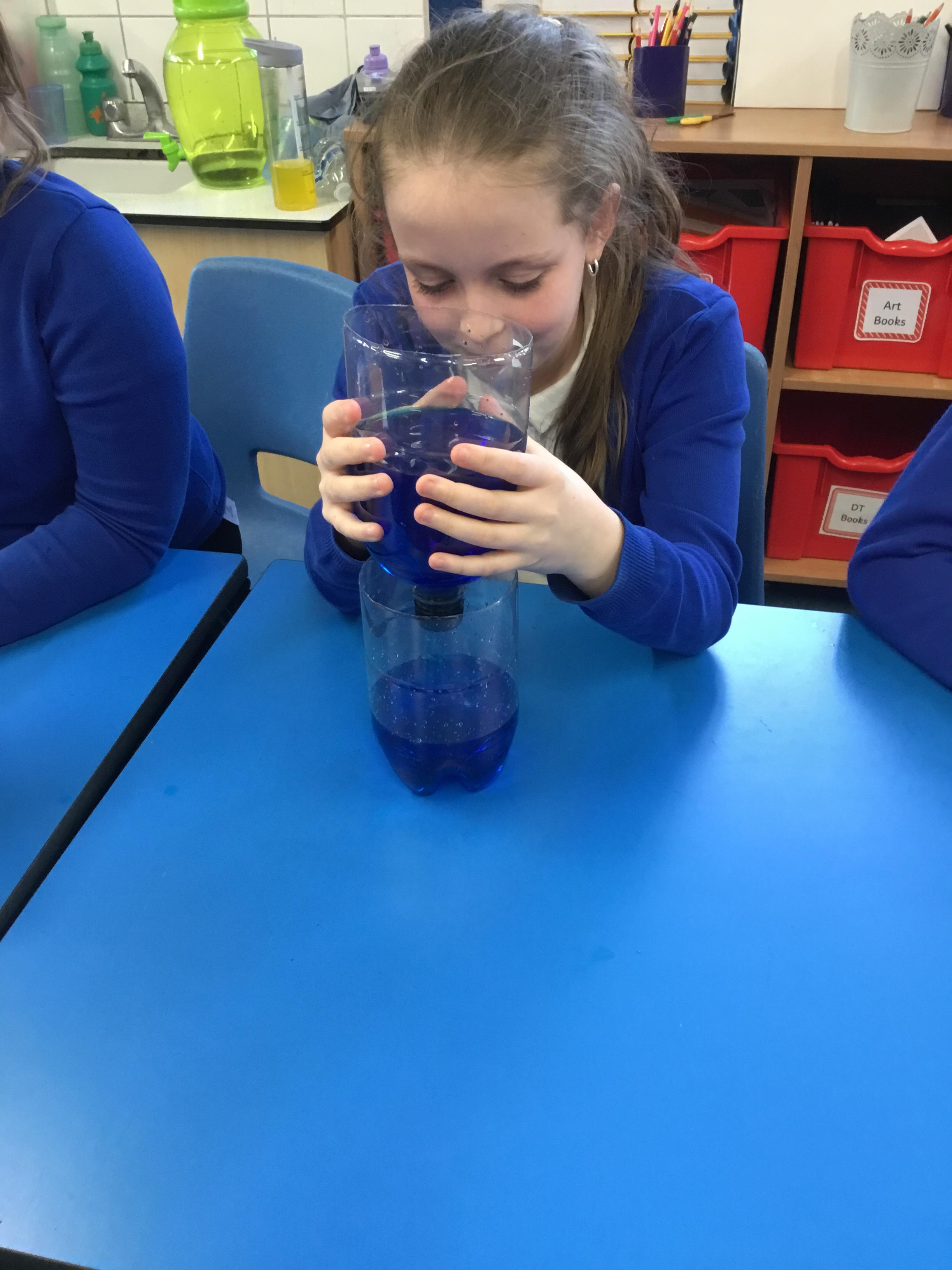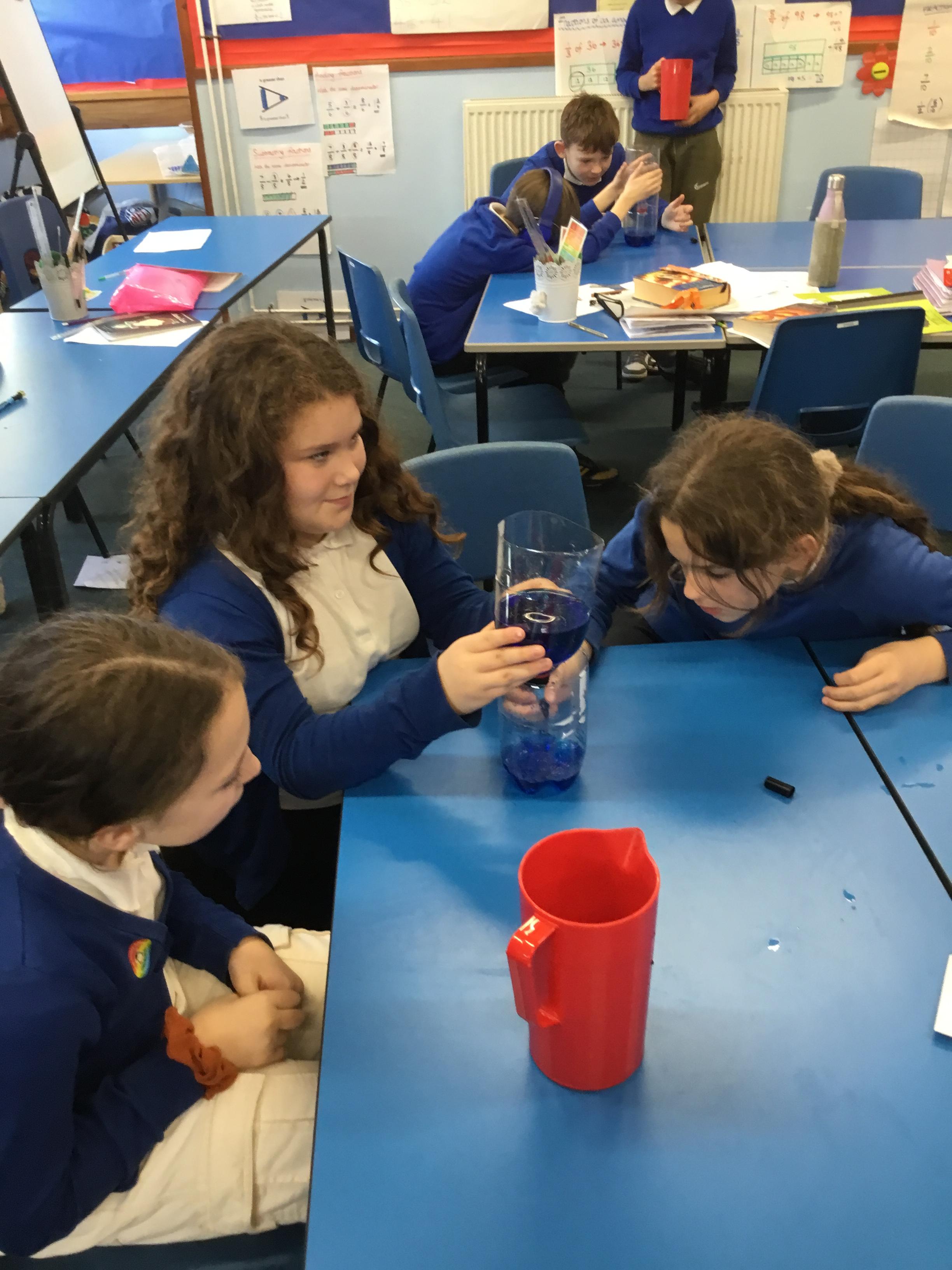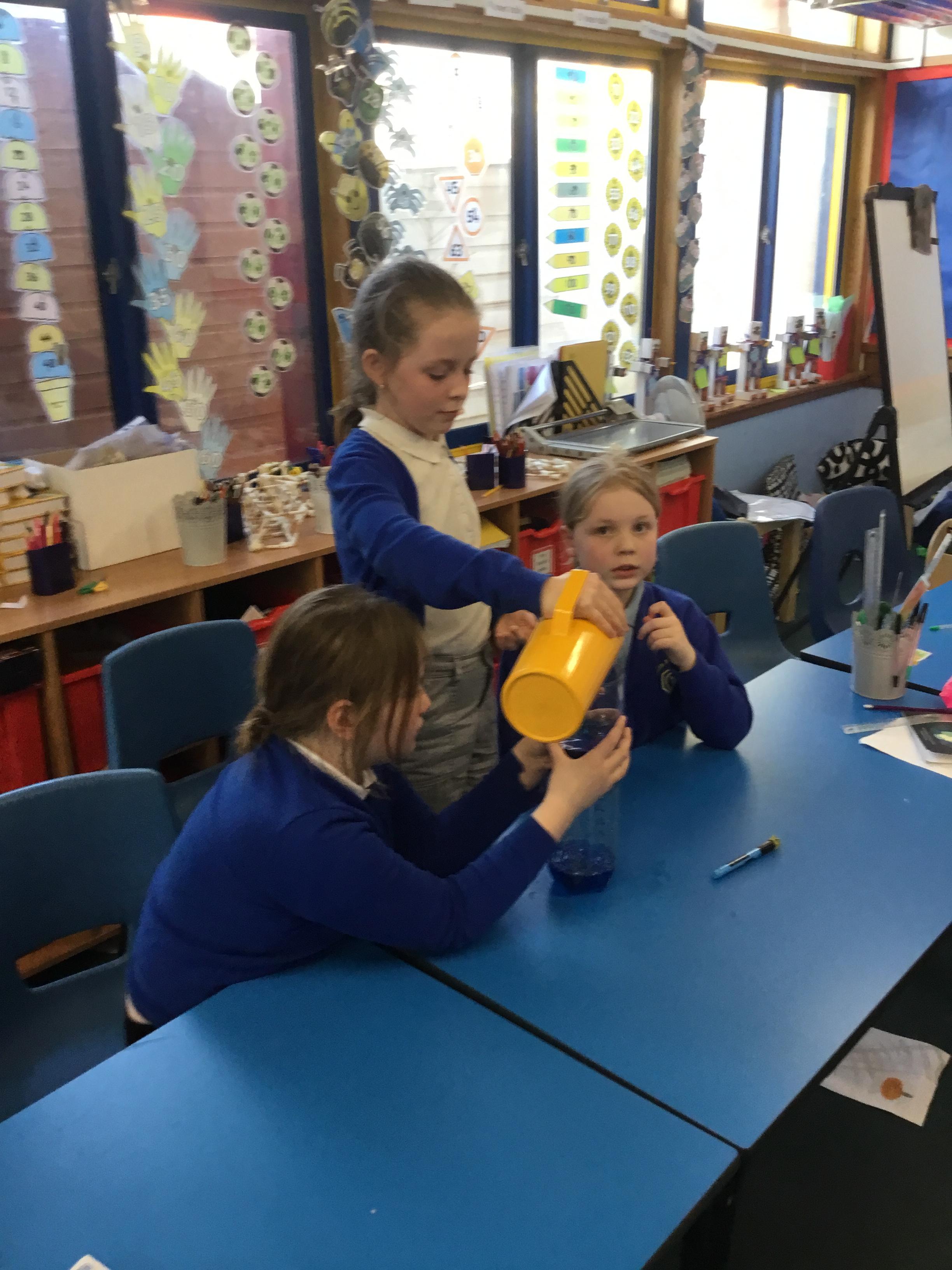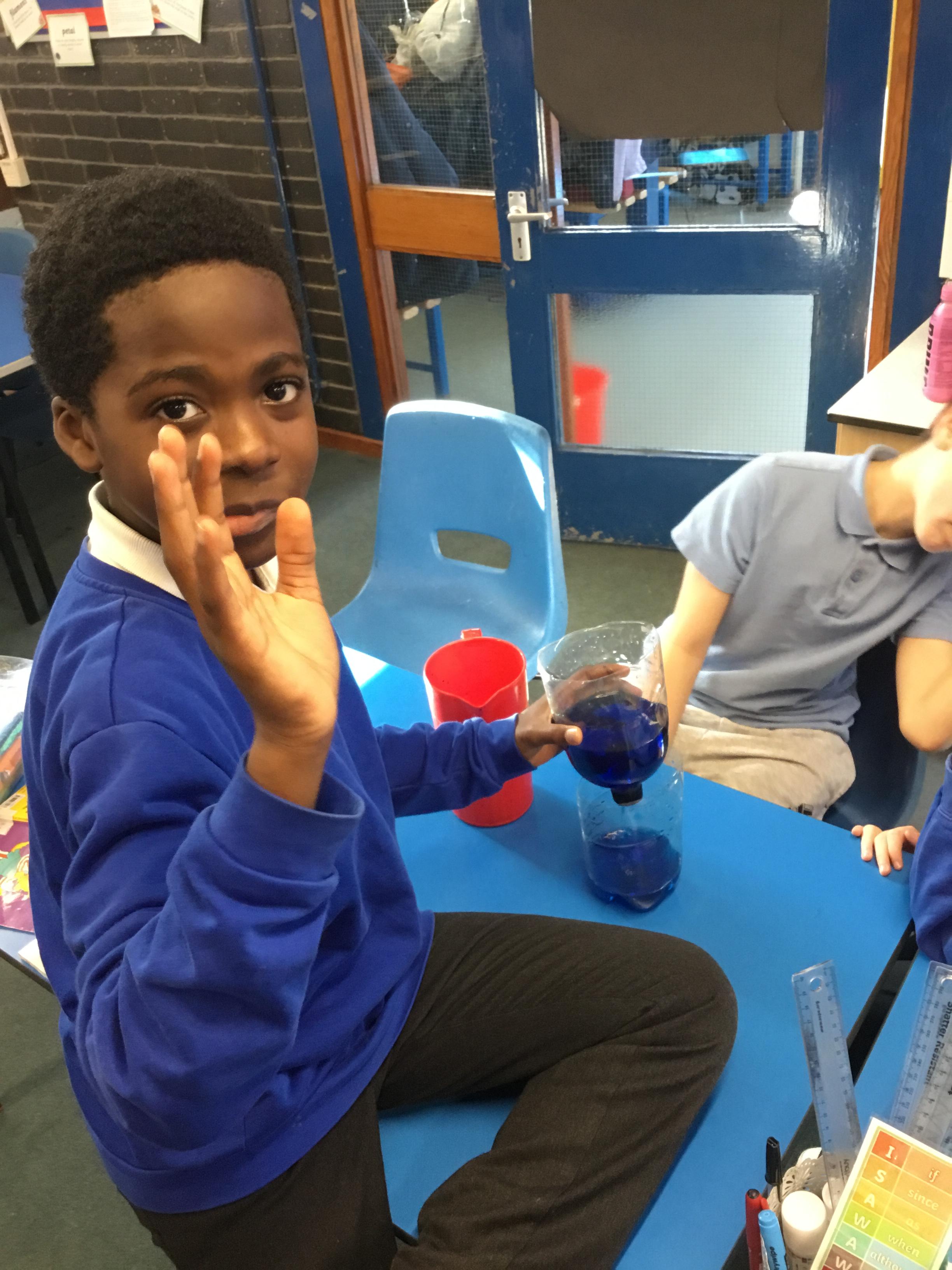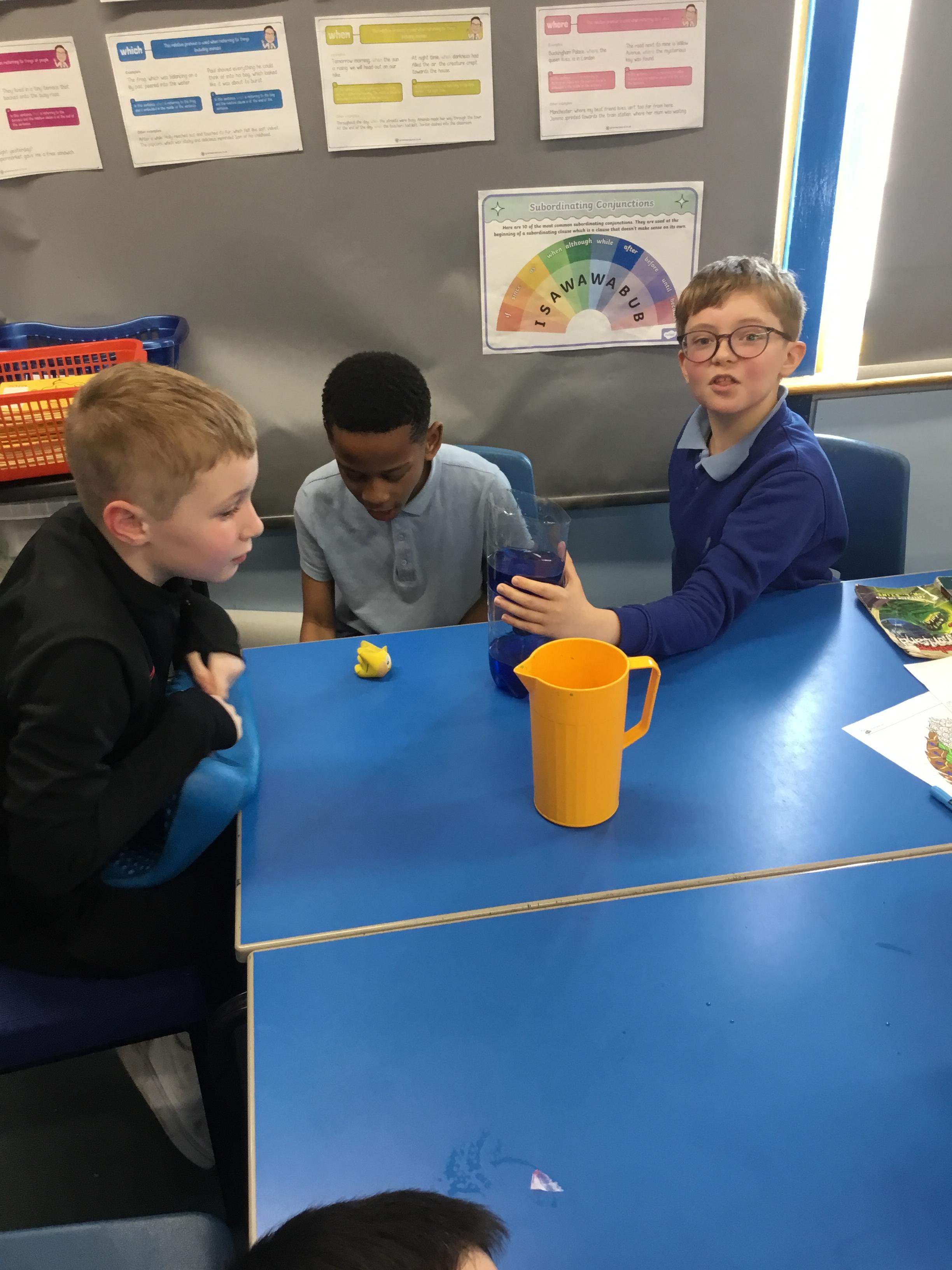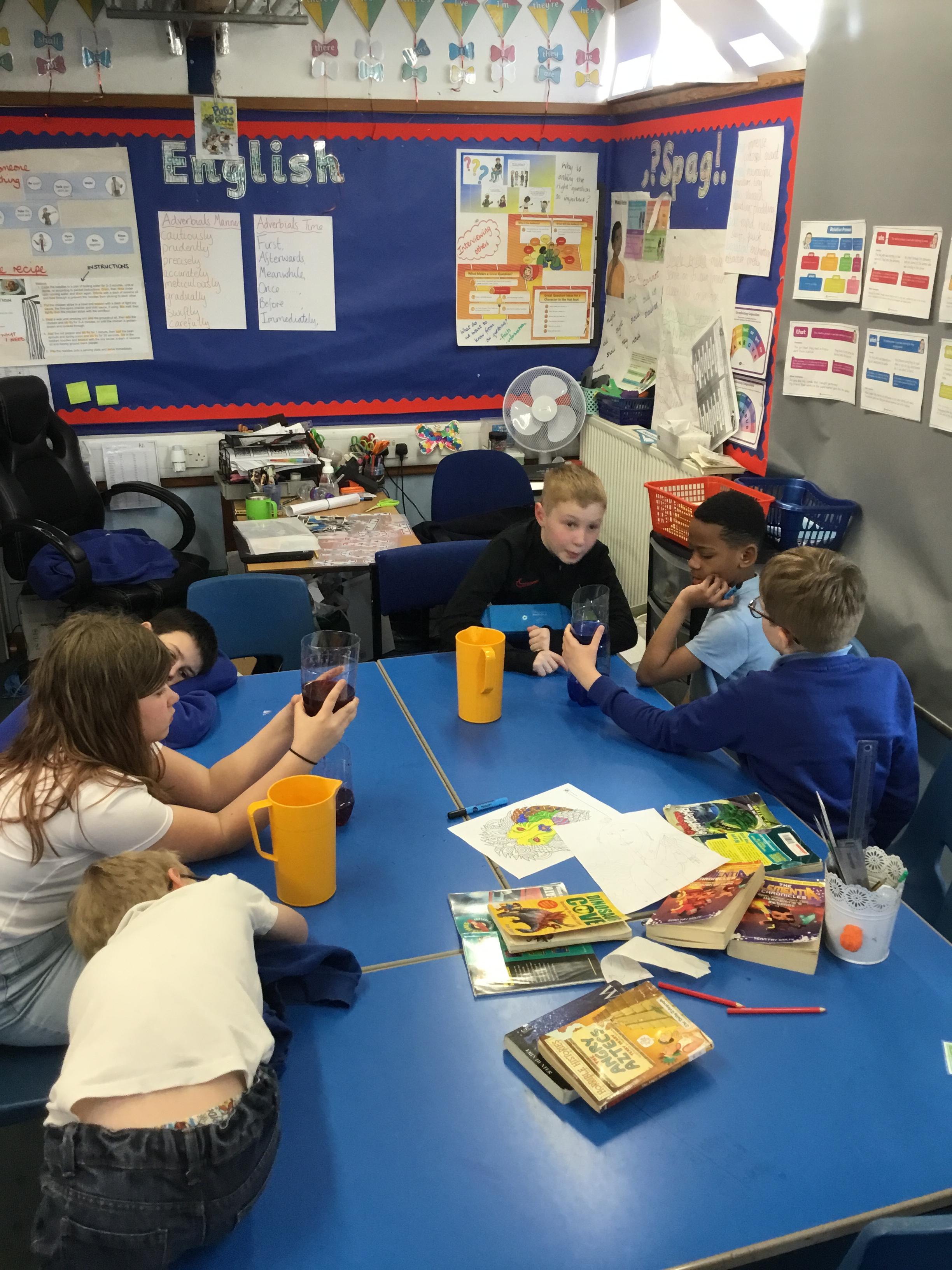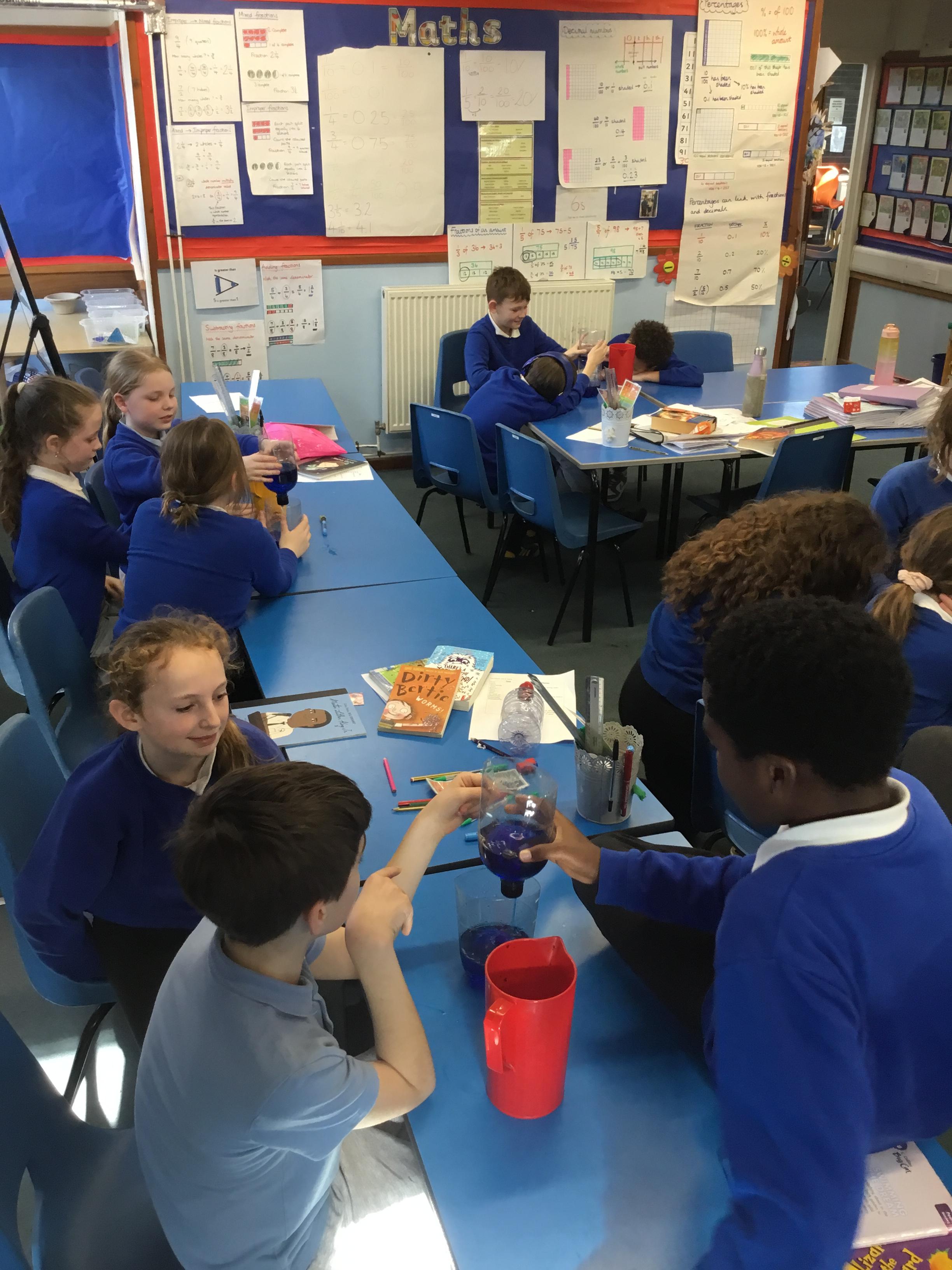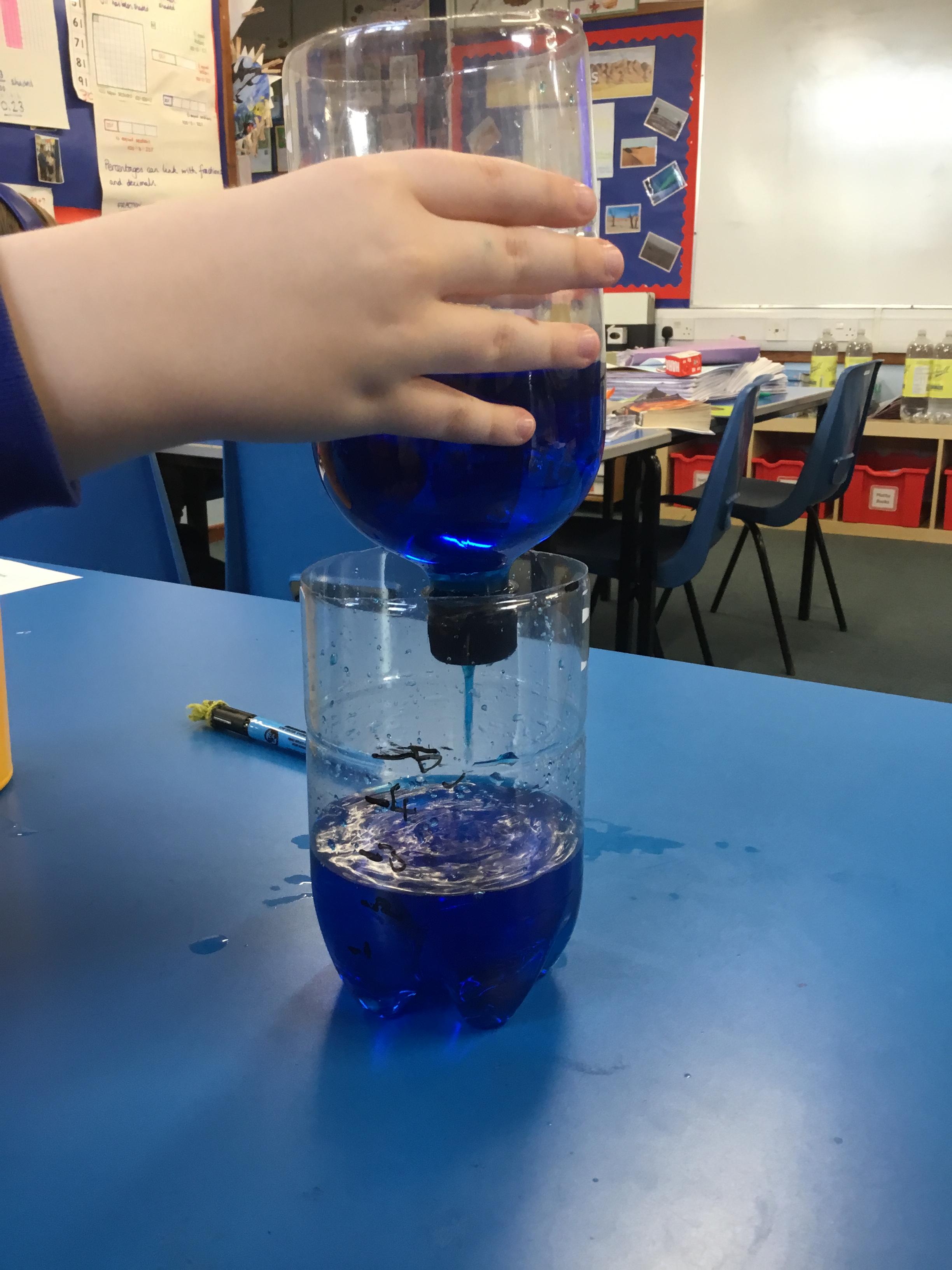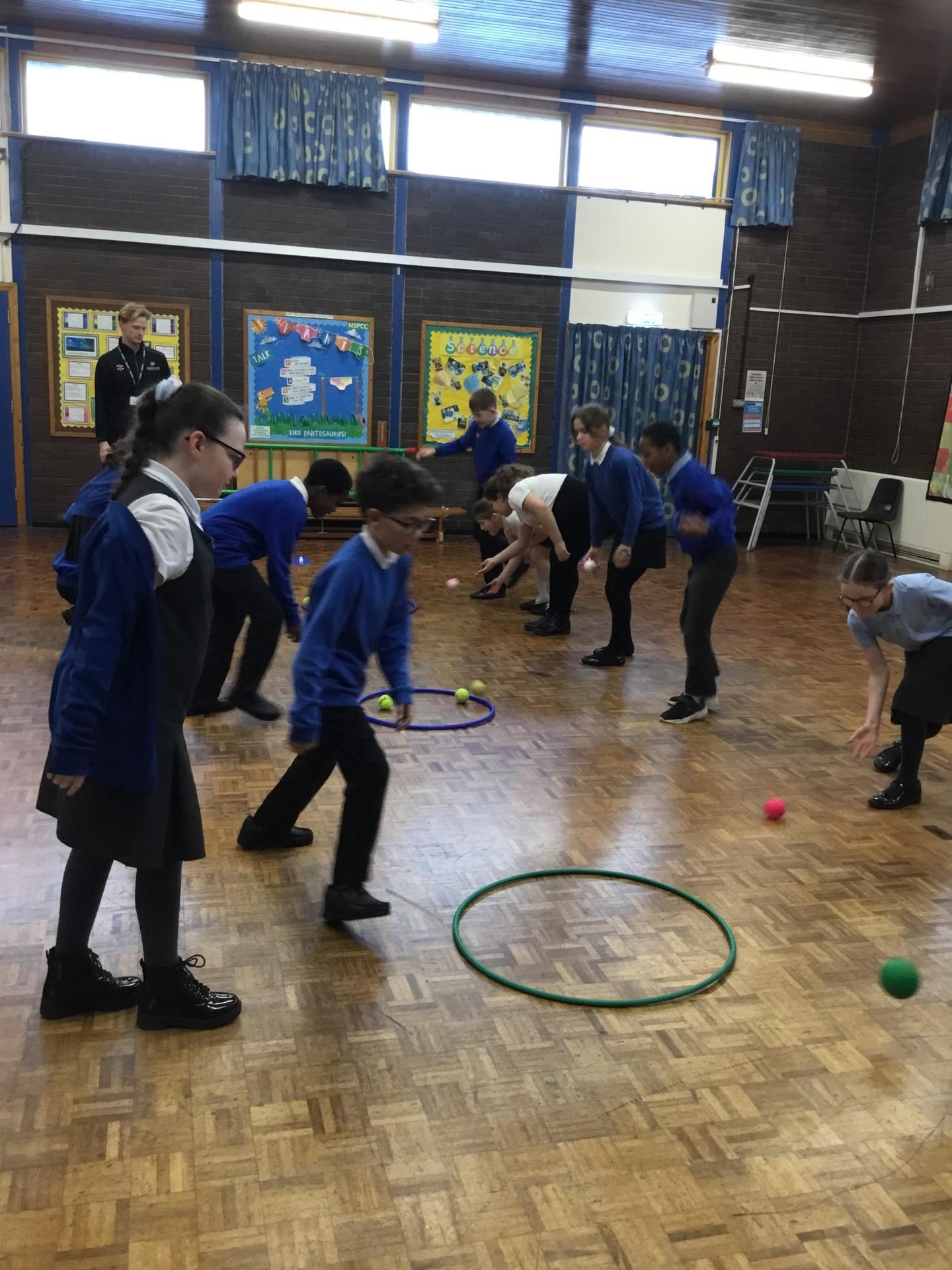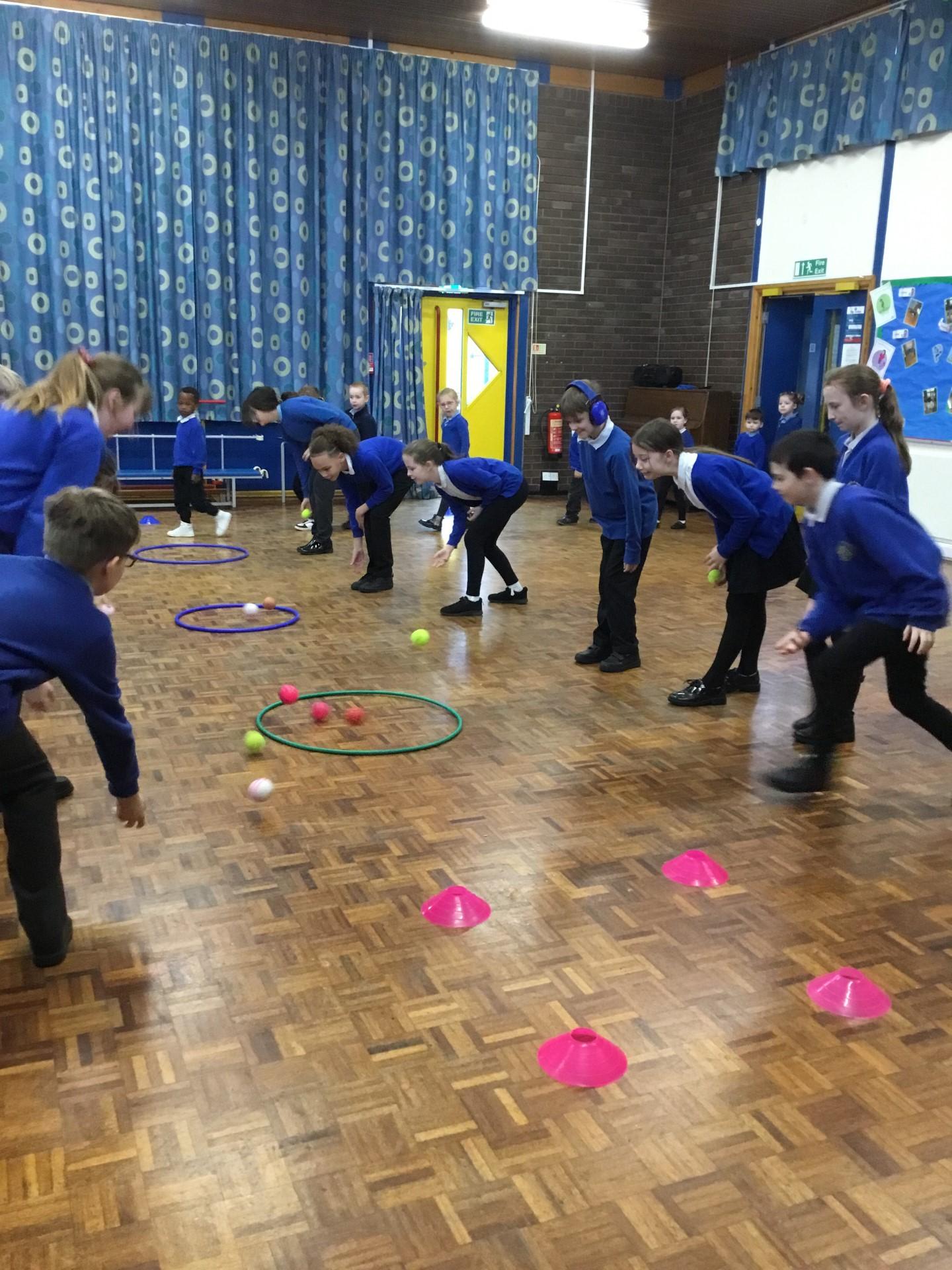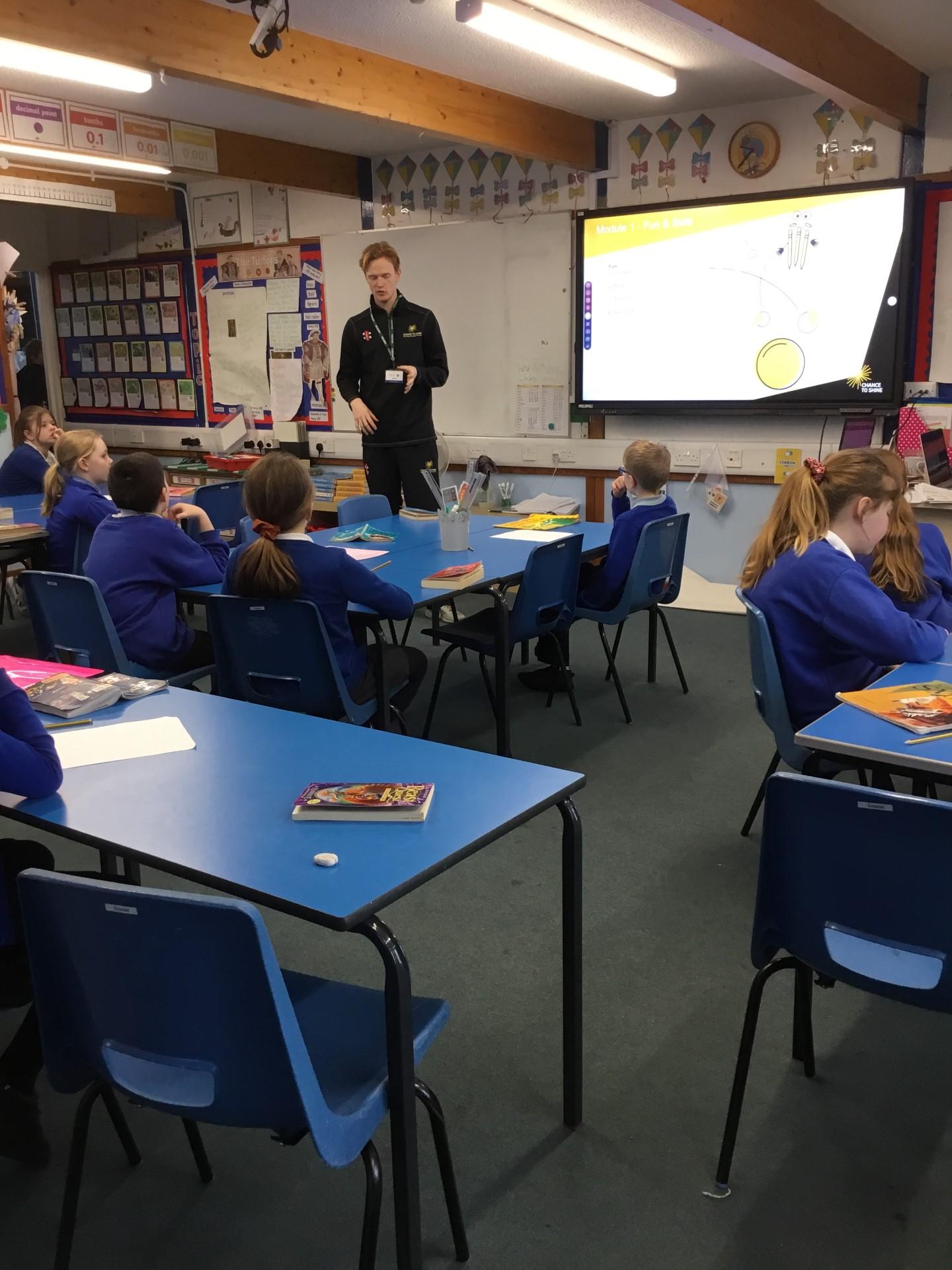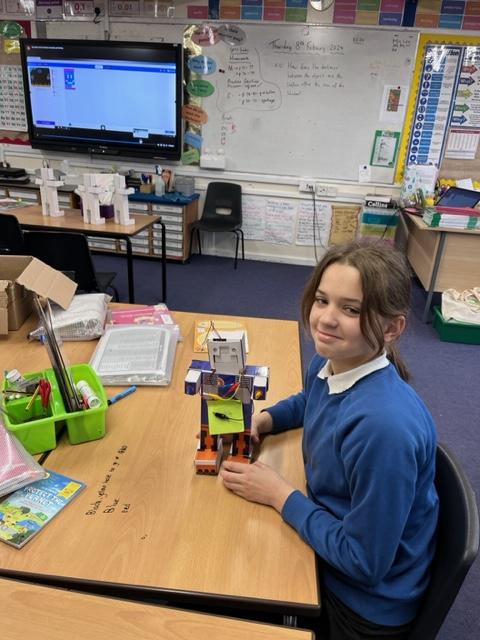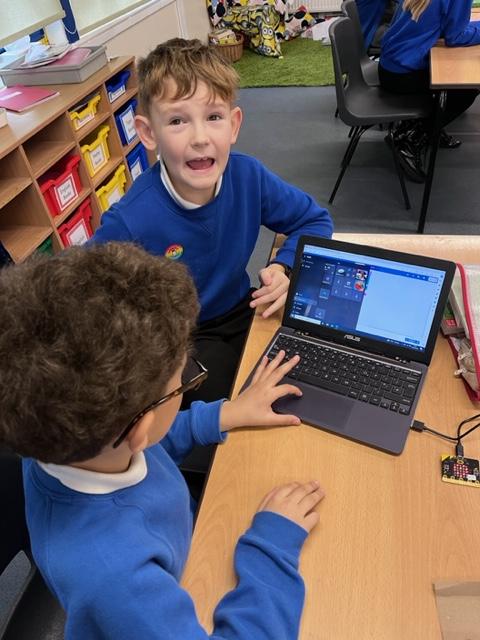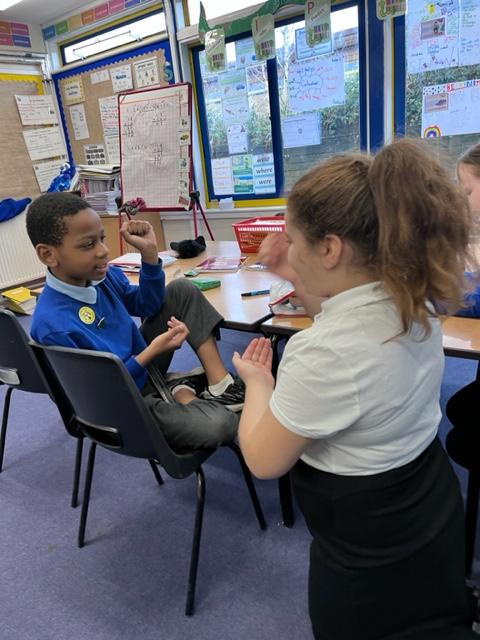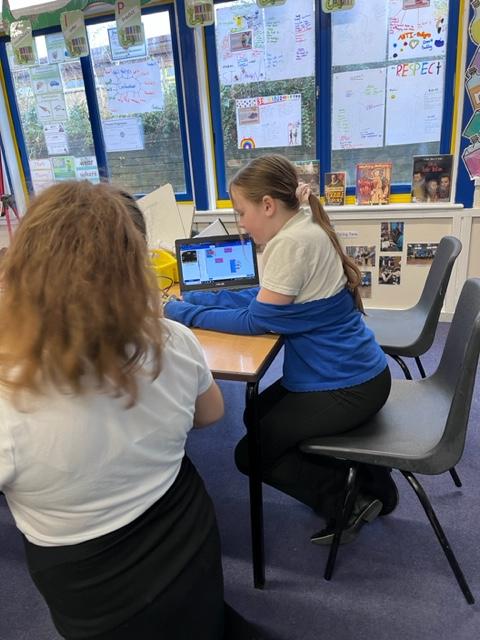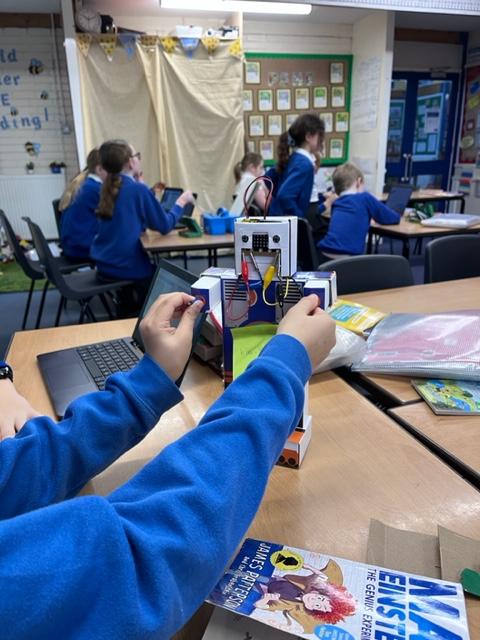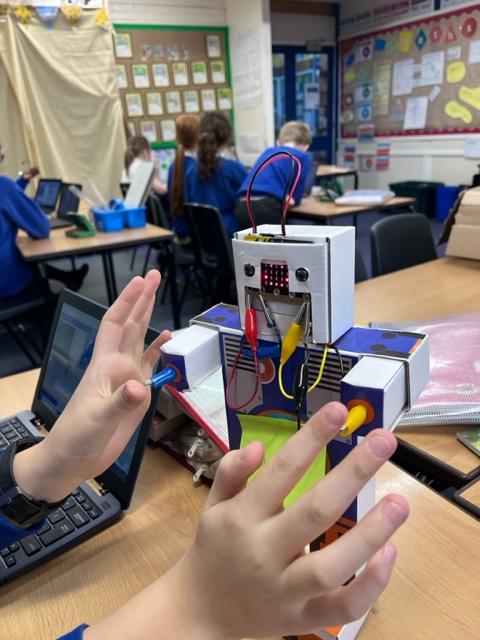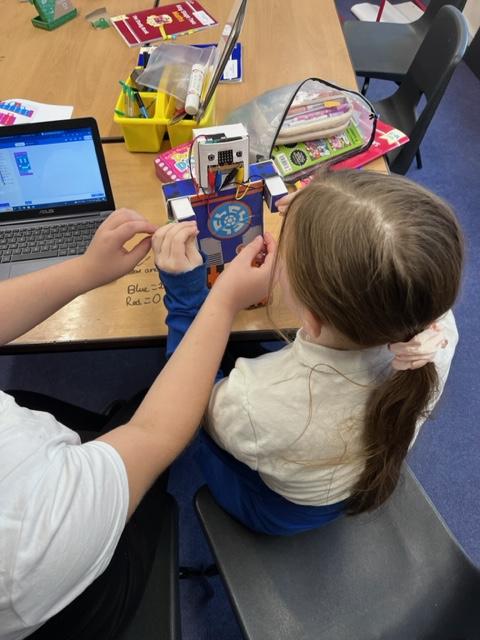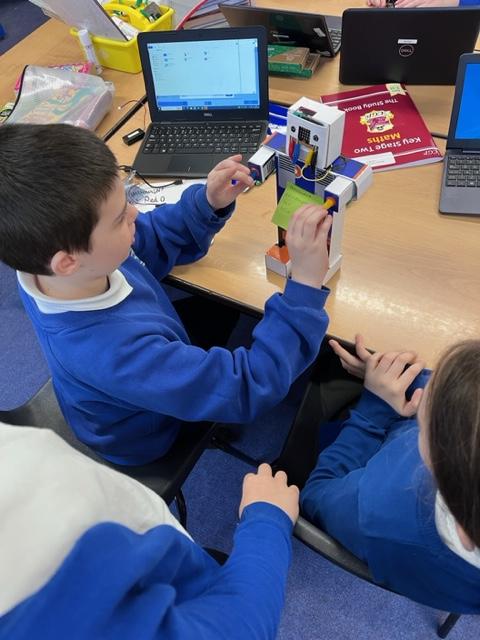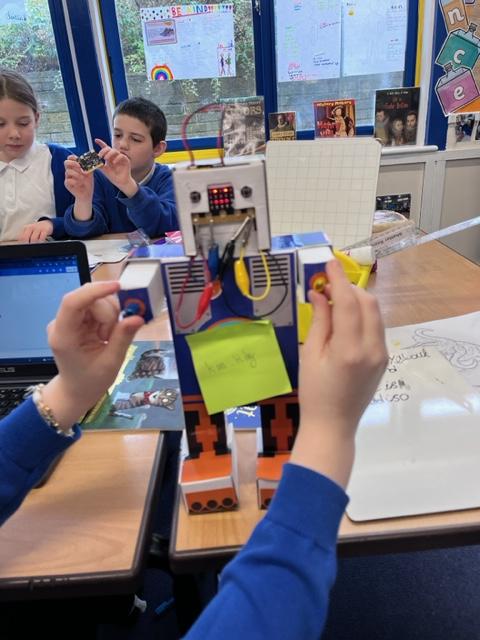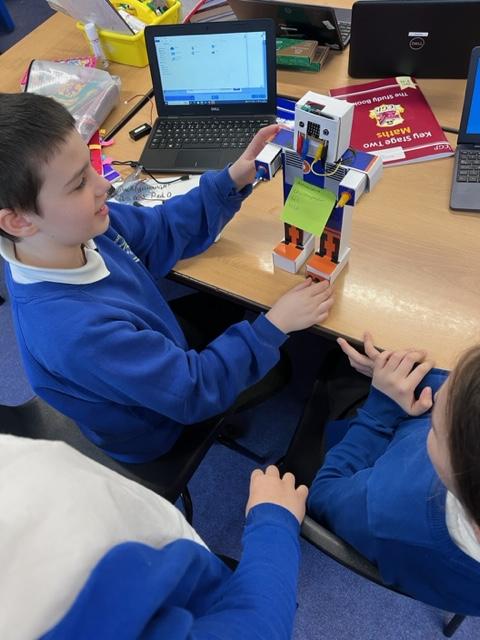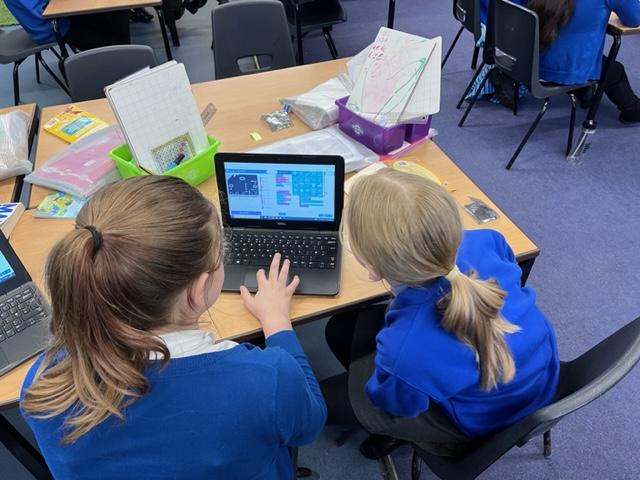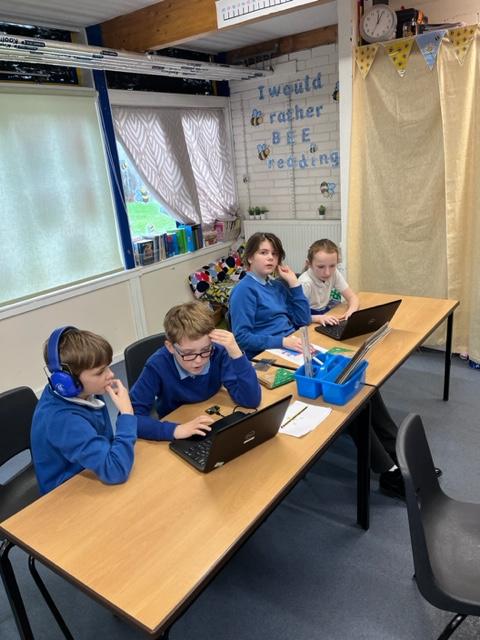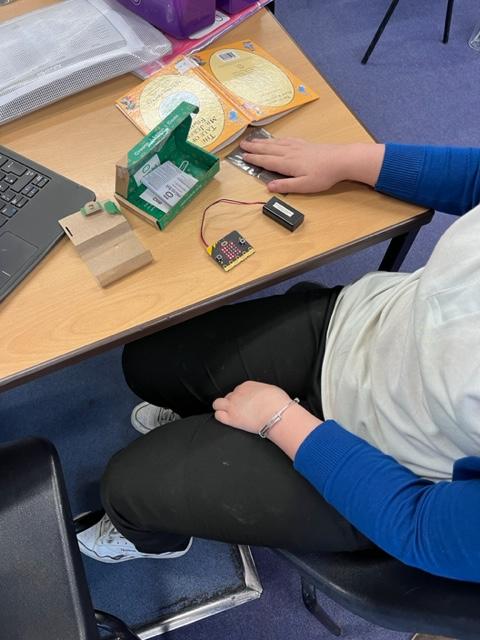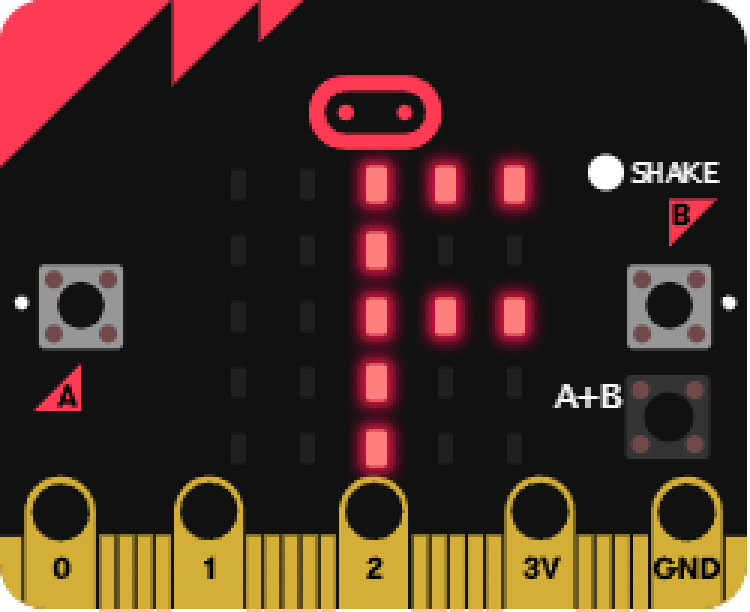Spring Term
Information for parents and families
Knowledge Organisers to support with learning at home
Optional half term homework
Science week. We made and tested water clocks.
Week Beginning 11th March
In English, the children wrote their set of instructions on how to make ‘Yeti noodles’ linking to our text Pugs of the frozen north. These were fantastic (and slightly disgusting!) The children included adverbials of time and manner, conjunctions and parenthesis.
In Maths, the children have learnt how to find the perimeter of rectangles, rectilinear shapes and polygons. They also used their knowledge of shape to find lengths of missing sides. In addition to this, they had to find lengths and widths of sides of shapes when given the perimeter. Tricky work!
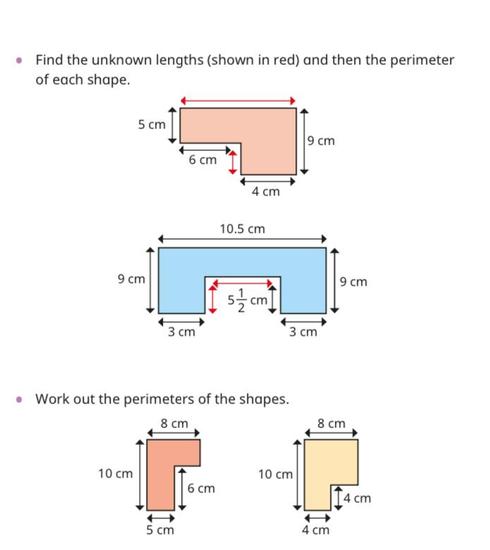
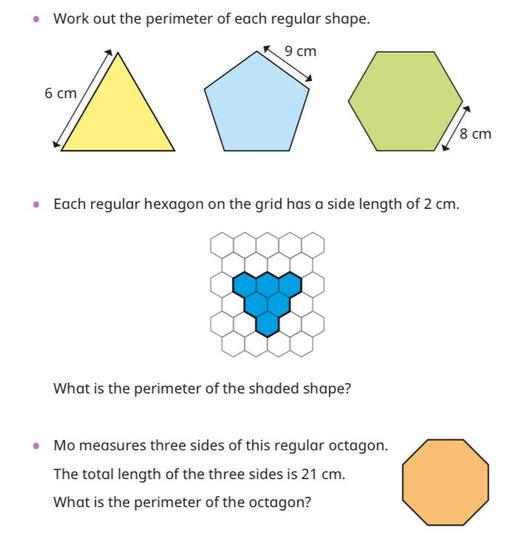
In Science, the children used their learning of a mammals life cycle and compared it to the life cycle of a bird. They worked in pairs to create large posters of the two life cycles and placed similarities and differences around them.
It was also Science week this week and the theme was ‘time’. Year 5/6 we’re given a choice of which experiment they wanted to take part in and the children in Emerald Classroom made water clocks. They were very excited when their timers lined up accurately with the time!
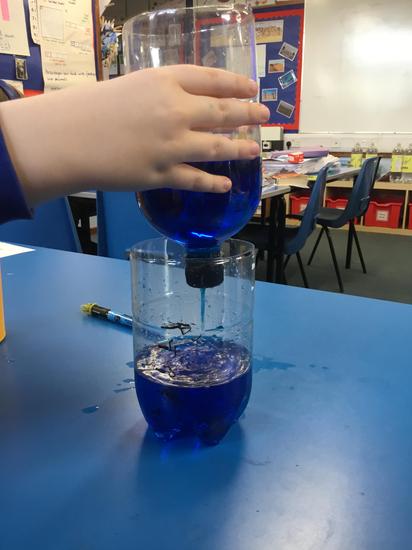
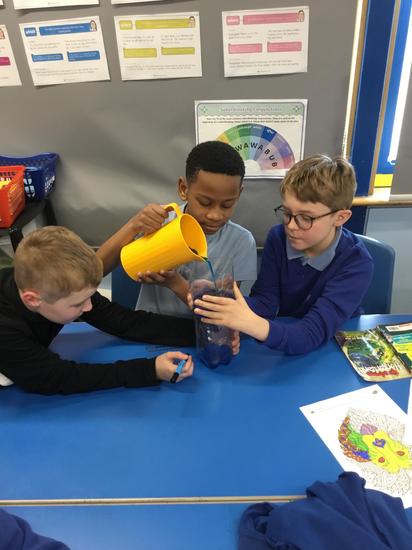
In Geography, the children learnt about how humans use the desert. They then personified the desert by writing speeches in role of the desert describing all of the ways they can help and be of use to humans. They included things like: recreational activities, renewable energy, settlements and
inked their prior leaning by describing the animals and plants found in the desert.
In French, the children created a family tree. They used their prior learning of naming siblings but also learnt how to say the names of parents, grandparents, aunts, uncles and cousins.
Week Beginning 4th March
This week was assessment week where the children completed maths, reading, spelling and punctuation and grammar assessments. They have all done absolutely brilliantly!
In the afternoons, we still completed our foundations subjects and attended swimming on Friday! It was also world book day on Thursday and the children (and staff) looked brilliant!
In Science, we learnt about the life cycle of a mammal. To begin with, we discussed what mammals were and how they were identified. We then looked at the life cycle of a dog and names the different stages:
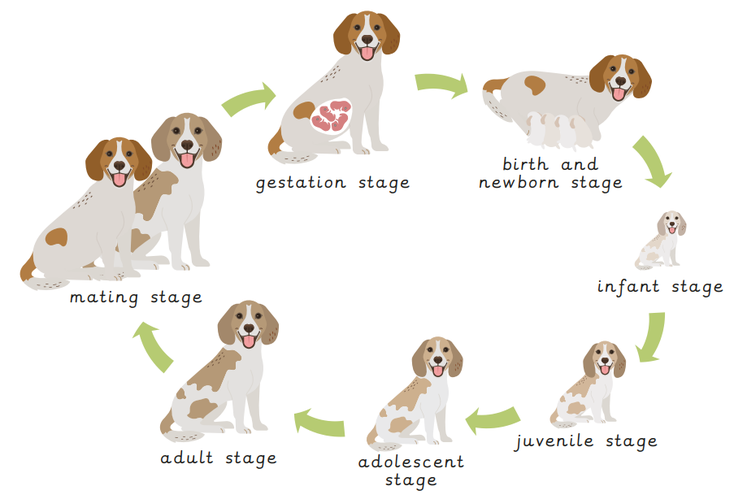
The children then chose either a hedgehog or a kangaroo and created a life cycle of the animal.
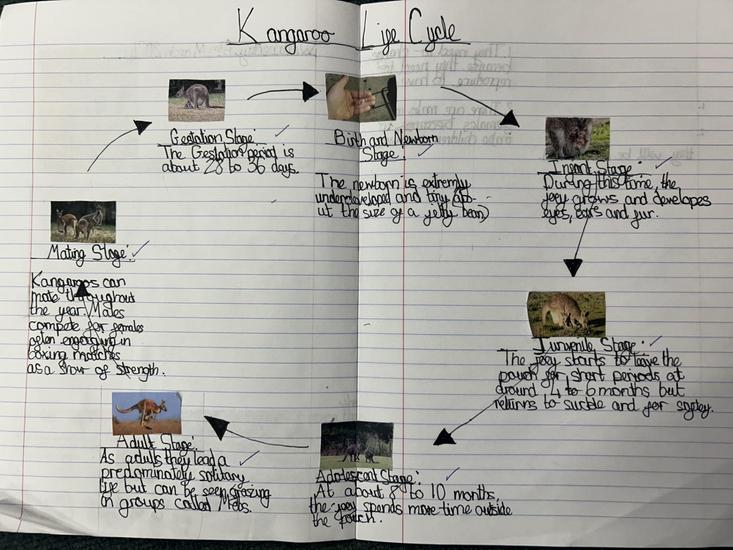
In Geography, the children completed an orienteering activity. They had to find the physical features of a desert environment which I had hidden around the hall/ KS2 area. They then had to match the pictures to the description or others had to draw a representation and write a caption to describe it.
In French, the children have learnt to say if they have siblings or not. This week, they created their own family tree in French like the one below.
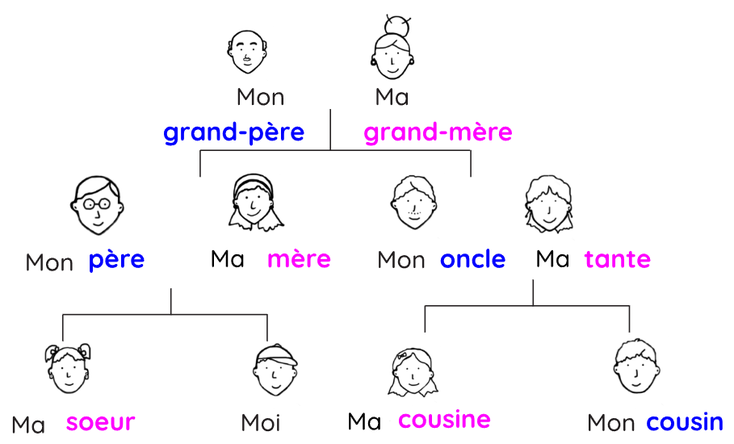
Week Beginning 26th February
Welcome back! We hope you have had a wonderful half term!
In English, the children have looked at the features of instructions and listened to a section in our story all about Yetis making noodles! It is very funny! The children have thought about ideas to make their own Yeti recipe which they will write after assessment week (which is next week). To begin the week, they looked at imperative verbs and features. After this, the children identified and wrote sentences containing adverbials of time and manner. Following this, they learnt about parenthesis and thought of sentences they could write using parenthesis in their recipes. They then finished the week by planning their Yeti recipes (which are slightly disgusting haha!)
In Maths, we have started learning about percentages. To begin the week, we learnt that percentages are parts of a whole amount. We then explored percentages by comparing them to fractions and then found decimal equivalents.
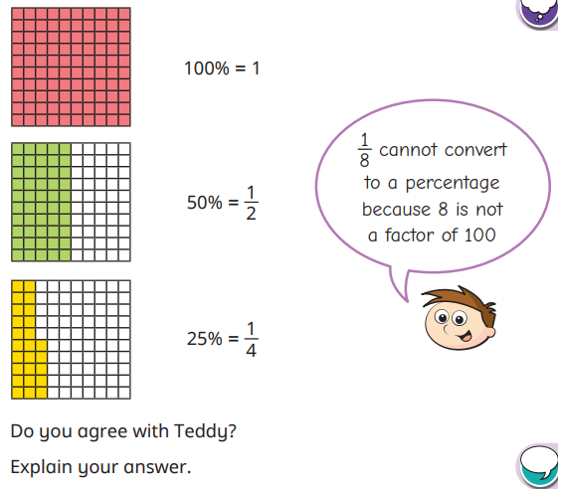 #
#
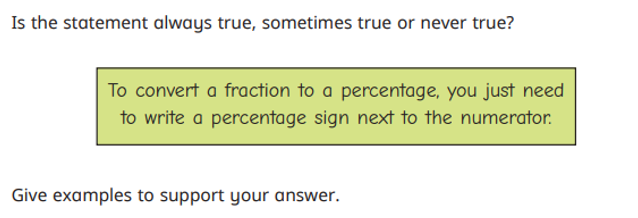
In Geography, we have started our new topic of 'would you like to live in the desert?' To begin the topic, we summarised the characteristics of a desert biome and used the characteristics to write postcards. The postcards included: climate and weather, human and physical features and examples of animals and plants.
In Sciecne, we have started to learn about living things. We began the topic by learning about the reproductive parts of a flower and the life cycle. The children dissected 3 different flowers and looked at the differences between each one. We then discussed the sexual and asexual reproduction.
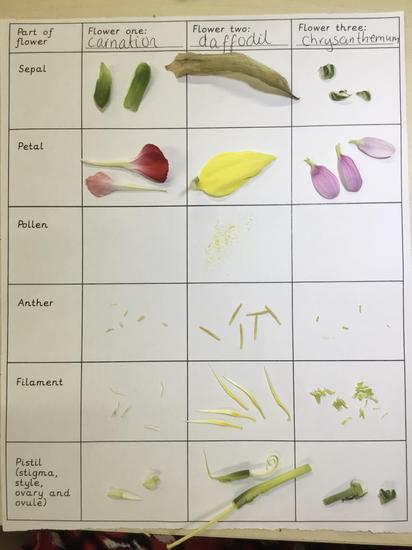
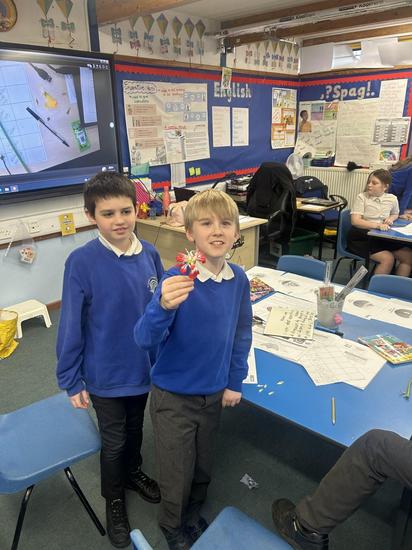
In DT, the children are learning about structures and will be building their own bridges this term!
Year 5 will also have swimming this half term every Friday morning!
Week Beginning 12th February
In English, we had to listen to a section of our story and use the figurative language to visualise and compose an image. We all ended up with similar drawings of the Kraken! Following this, we read and extracted vocabulary from the poem 'The Kraken' by Alfred Lord Tennyson. We then used this poem to create a collaborative sea poem using exciting vocabulary and poetic devices. They were incredible! We finished the week by performing the poems to each other using actions and varying our tones and expressions.
In Maths, we were rounding decimals to the nearest whole amount and to 1 decimal place. We had lots of fun completing an orienteering activity in the hall where we had to hunt for the questions and answer them with partners.
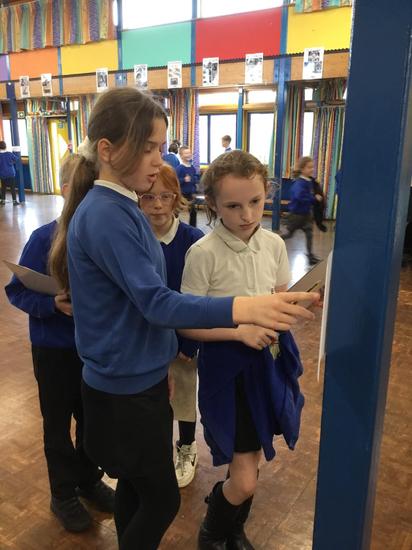
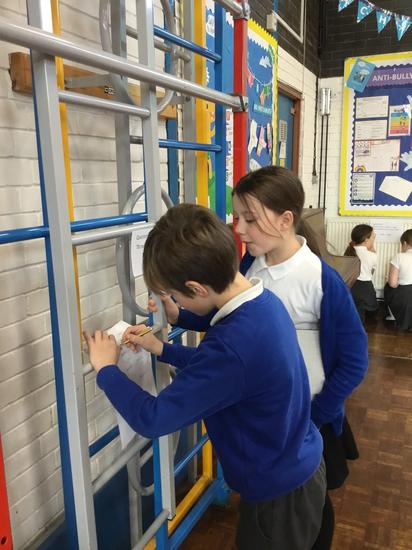
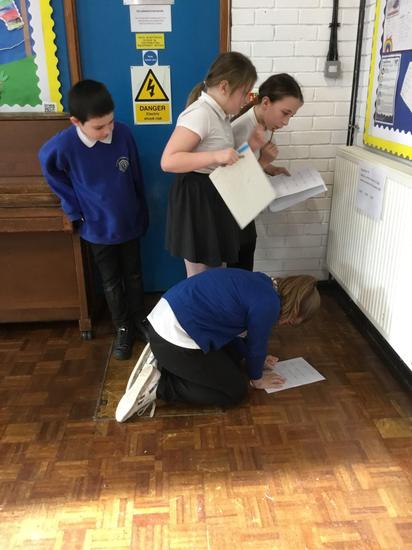
In Science, we learnt how to calibrate and use a sundial to measure time. The children made their own sundials and were able to explain how their sun dials worked and suggested ways to improve their design such as 'make the base more secure'. We used a torch to represent the sun and moves the torch from East (sunrise) to West (sunset). We also used compasses to label North, East, South and West in the classroom.
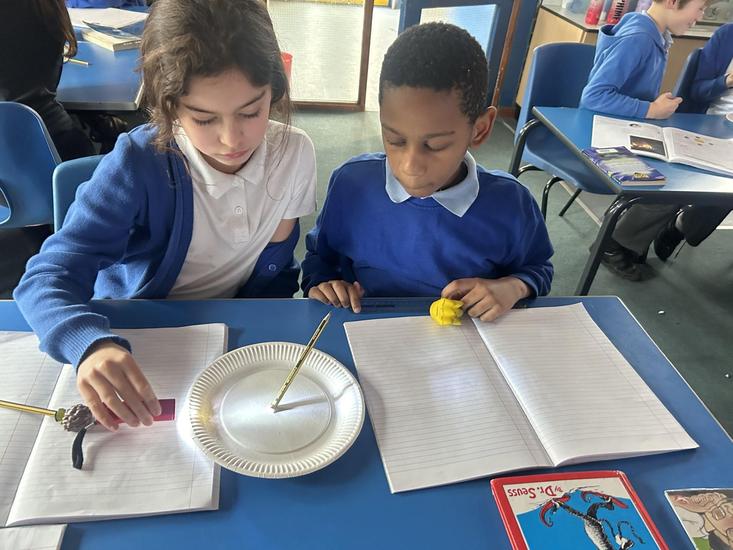
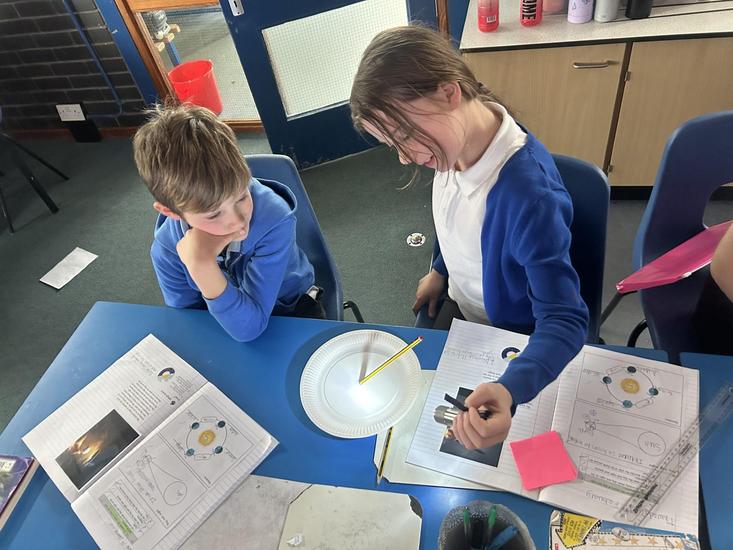
The children finished their history topic of Tudors by making deductions about the people in Tudor England using inventories. We split the class into different groups and gave each group a different inventory to analyse. The children then had to decide whether the person was rich, poor or comfortable based on their possessions. They then had to present and share their findings with their peers.
In Art, the children had to create portraits of themselves. However, they were not your typical portraits! They had to use adjectives to describe themselves to show the outline of their features and place this onto a wash background and complete another collage. This is one fantastic example of the amazing pieces they created!
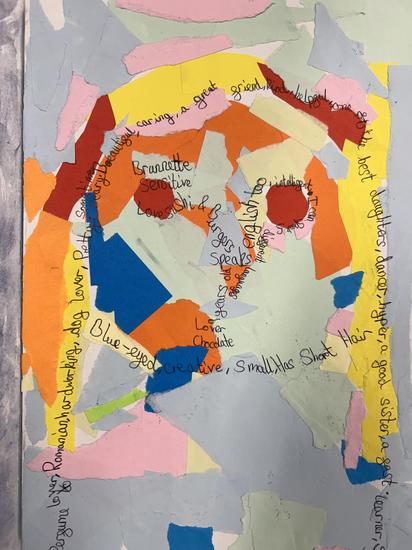
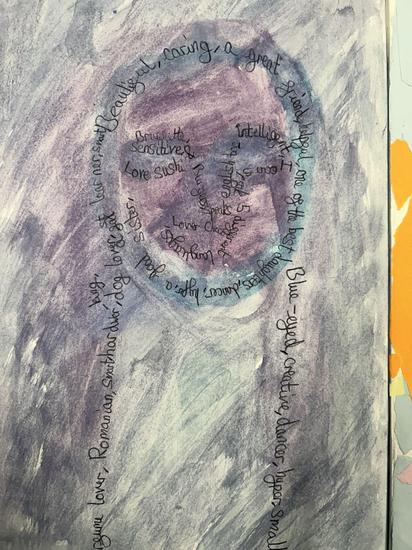
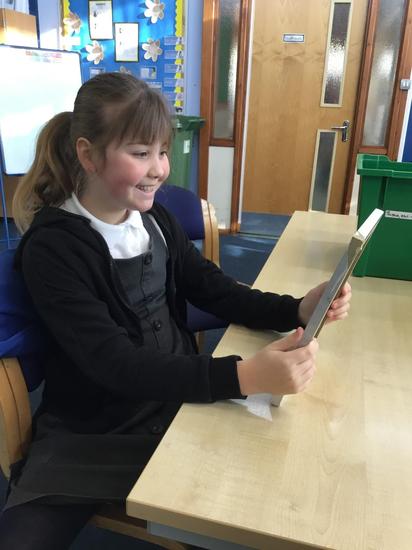
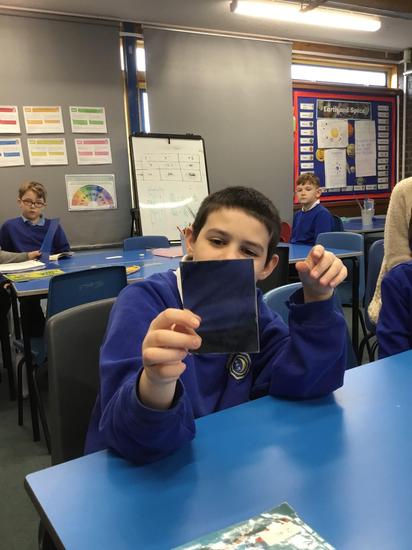
Year 5 have had playleader training ready for after half term!
This week in Computing lessons, the children have been able to code the BBC Micro:bit's to use with their Binary Bots. The children, in their groups, have each built 'Dimm' their Binary Robot in preparation to show its interactivity using the coding strings they have learnt. This week, they have been able to use the code block 'Pin' which allows the Micro:bit to programme the robot to do different tasks on instruction. The first instruction the children gave was to enable 'Dimm' to smile when his hands were pressed. To activate this, the children also needed to understand how to correctly wire the robot. As well as this, the children also programmed the Micro:bit to play a game of 'Rock, Paper, Scissors'.
Week Beginning 5th February
Continuing their learning from last week, the children wrote their interviews in groups. They had to think carefully about the character they were interviewing and the quality of questions they were asking. They also had to think about the character in the text to try and show the personality in the answers. Each group performed their interview to the rest of the class and the children had to be prepared to give each group feedback.
In Maths, the children have been comparing and ordering decimals with the same and different number of decimals places. They had to think carefully about the value of each digit and used place value charts to support them if they needed to. They used mathematical terminology such as ones, tenths and hundreths and greater than/ less than symbols to compare. Example questions:
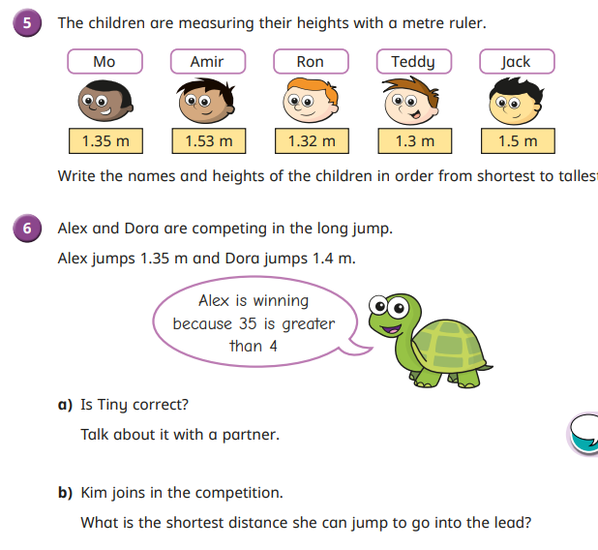
In science, the children have continued to learn about Earth and Space. To begin the lesson, the children used a compass to find north, east, south and west of the room and labelled them using the sticky notes. They then made sun dials and used a torch to represent the sun rising from the east and setting in the west. As the Earth rotates, the gnomon's shadow shifts position showing a shadow for different times of the day. The children marked sunrise, midday and sunset on their sundials.
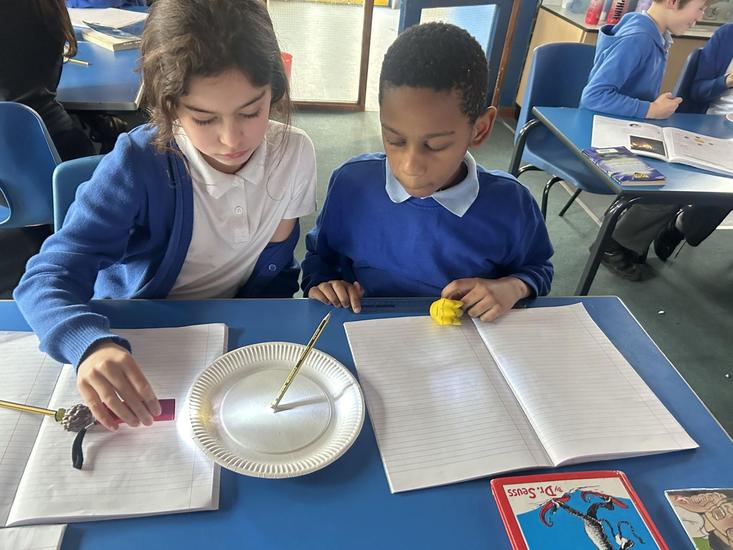
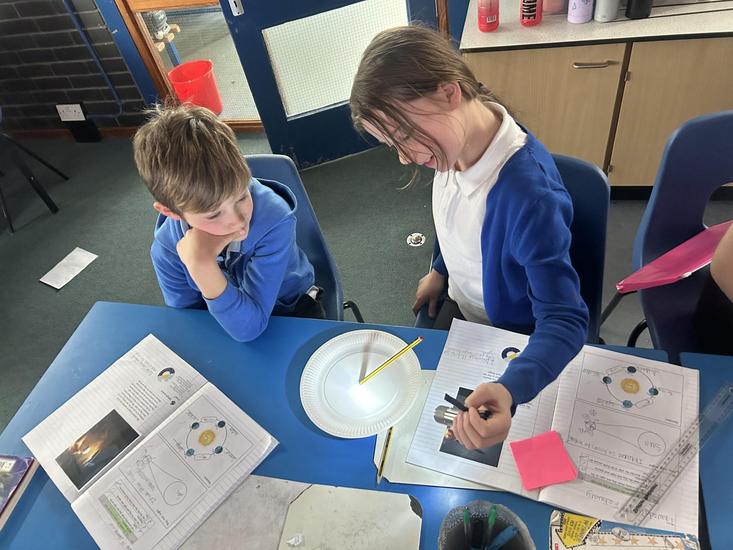
This term in computing, the children have been tinkering and programming Micro:bits. Next week, they will be using the micro bits in robots!
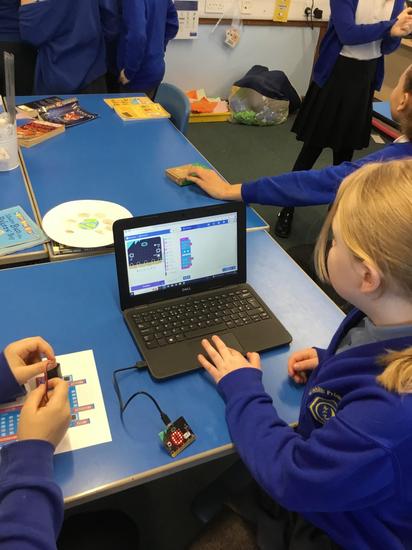
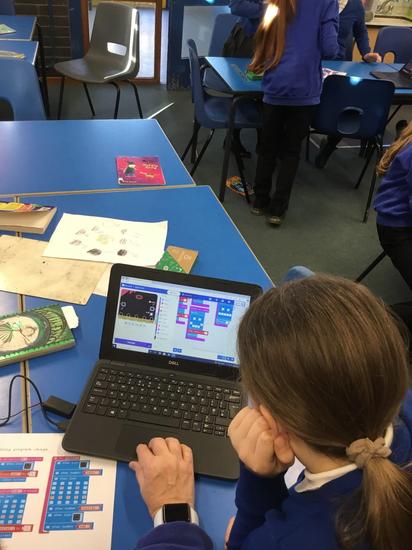
In PSHE, children discussed the impact that technology has on our wellbeing as well as how we can be resilient when faced with difficult or challenging situations. In art, we continued our work on portraits - using different techniques to create an image (using both pencil and coloured paper).
Week Beginning 29th January
We have continued to read our text 'Pugs of the Frozen North' in English. The children are going to write interviews over the next 2 weeks to interview the competitors in the story. They started the week by learning about what interviews are, the features of interviews and interviewed each other on a range of topics. The children had to think about the quality of their questions and what sort of questions need to be asked. The children then made notes and retrieved information from the text about each competitor so they could reflect their personality and think about quality questions for their interviews.
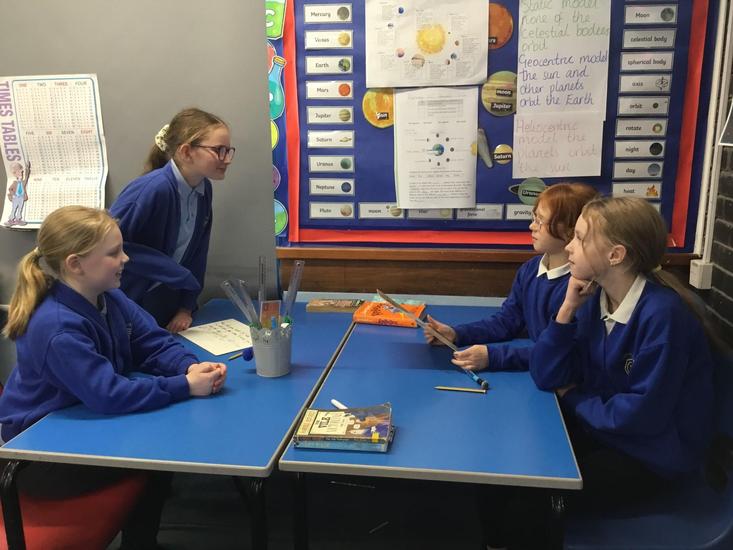
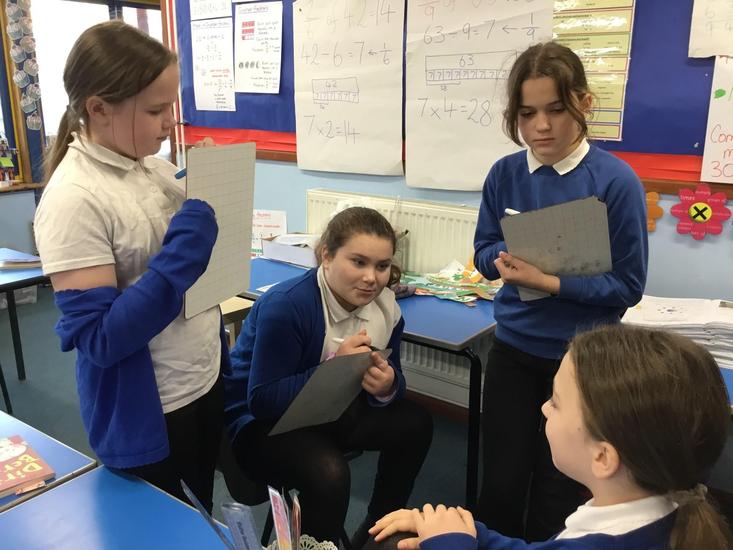
In maths, the children have continued leaning about decimals and percentages. They started the week by linking decimals up to hundreths to fractions and learnt about equivalent fractions and decimals. This included fractions less than and greater than one. They then continued their learning to learn about thousandths as fractions and decimals.
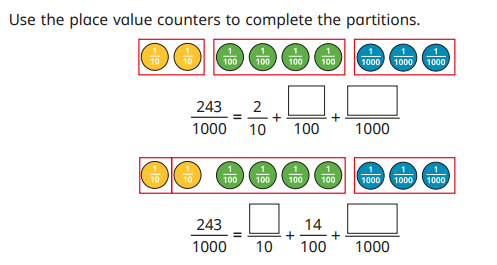
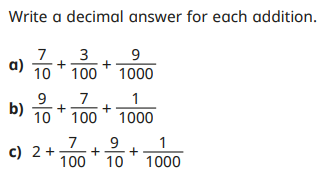
In science, the children worked in pairs to represent the Earth rotating on its axis with the 'sun' shining on it to show day and night. They marked the Northern hemisphere and had to freeze at different points to show whether it would be day or night. They then 'orbitted the sun' to show the seasons. They found that when we were closest to the sun it was summer and the days were longer. Whereas, in the winter the days are shorter.
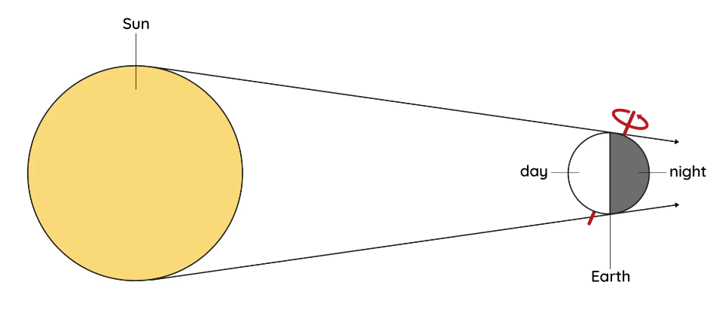
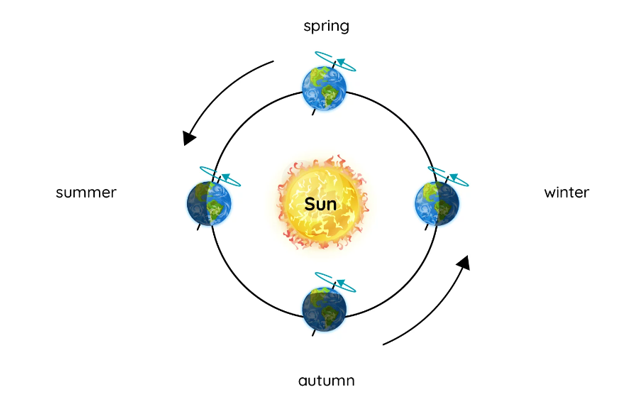
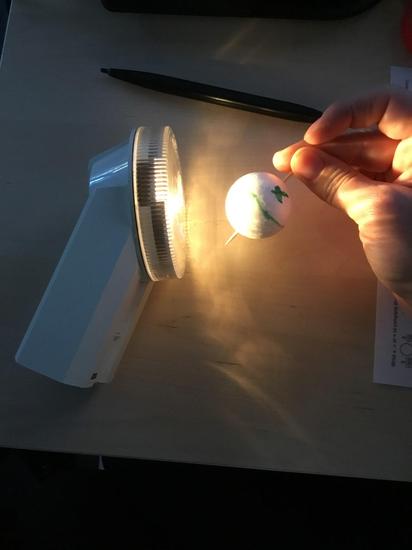
In history, the children learnt about the order of the Tudor Monarchs and made key notes about each one.
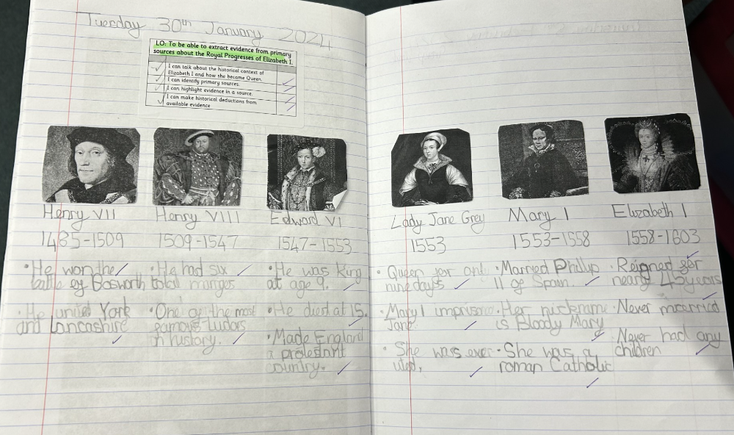
In PSHE children looked at how healthy their lifestyle is, focusing on food intake, the amount of exercise they take, what they do to relax and their dental hygiene. In art, children continued their work on continuous line drawings with a theme of self-portraits.
Week Beginning 22nd January
The children have planned and written their diary entries in English this week and they are absolutely amazing! They were tasked to include all of the features of a diary as well as the techniques we had been learning such as: figurative language (similes, personification, onomatopoeia, alliteration etc), show don't tell sentences, subordinate clauses and relative clauses.
In maths, we have started our new topic of decimals and percentages. To start this topic, the children have been representing decimals up to 2 decimal places, partitioning decimals, exploring tenths above 1 whole and finding the link between tenths written as fractions and decimals. Because of their great fraction knowledge, they have been able to already make fantastic links between decimals and fractions!
On Tuesday, we had History Off the Page Day! This was absolutely amazing! The children absolutely loved dressing in role as Tudors and learning all about the Tudor period. They made some fantastic Tudor objects and had a banquet with shows in the afternoon. The children all took part brilliantly! Photos will follow when we have collated them all from all of the adults who joined us :)
In science, the children learnt about the different phases of the moon. They were able to explain why we can only see part of the moon at different times of the month and were able to explain how we can see the moon because of the sun. They then created their own representation to show the different phases and challenged each other to move the plates to show which phase it would be in if the sun was in different positions.
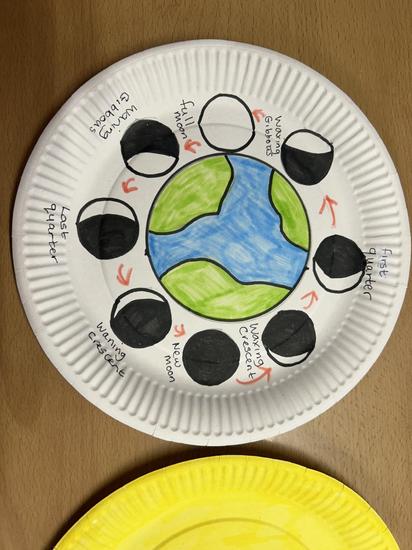
In RE, the children role played scenarios to show how people feel when they forgive someone and how people feel when they are forgiven. Over the next few lessons, the children will be looking at forgiveness in Judaism and Buddhism and then comparing the two religions.
Week Beginning 15th January
In English, the children have been really enjoying focusing their learning around our text 'Pugs of the Frozen North'. We began the week by looking at features of a diary entry. We then moved our learning onto SPAG lessons which the children wrote their own sentences containing subordinate conjunctions and relative clauses.
In maths, the children continued to learn about fractions. This week, they have calculated fractions of amounts and quantities. They applied their learning to real life contexts where they had to find fractions of quantities in problems. We finished our fraction unit by finding finding the whole and using fractions as operators.
In history, the children learnt about Henry VIII and his 6 wives. The children loved learning about the marriages and created fantastic non-chronological reports about the wives. I even gave out 2 diamond learners because they were that incredible (see one below)! There was lots of fantastic discussions and the children have been thinking about whether they think Henry VIII was a tyrant or not based on what they have learnt so far.
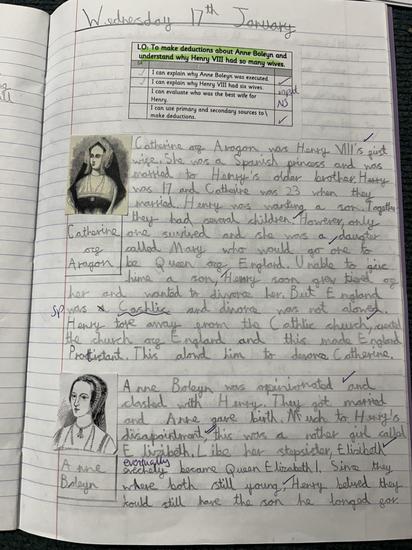
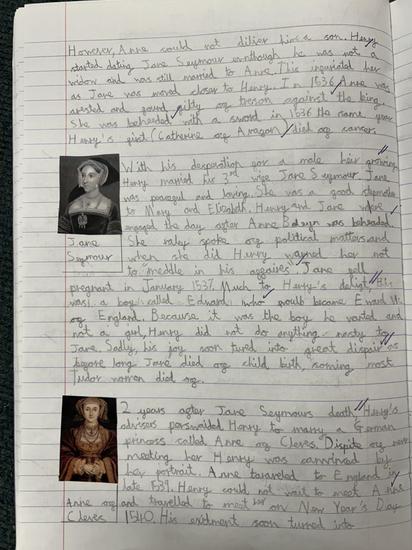
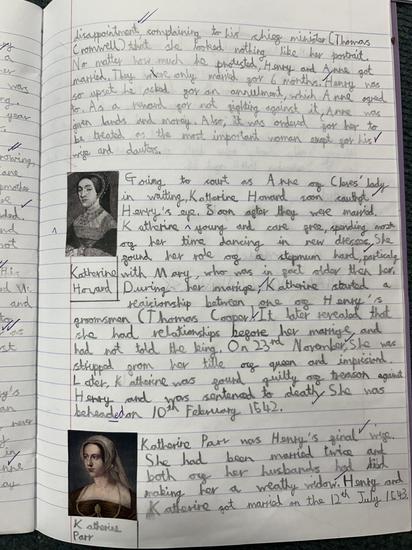
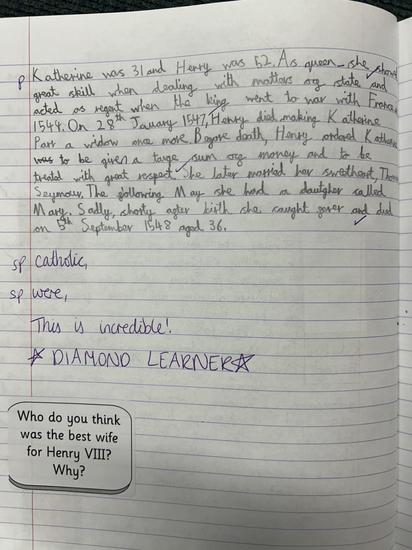
In science, we started our lesson by every child being given a planet. We then went outside to replicate the planets orbiting the sun. We discussed how planets further away from the sun had a slower orbit and further to travel.
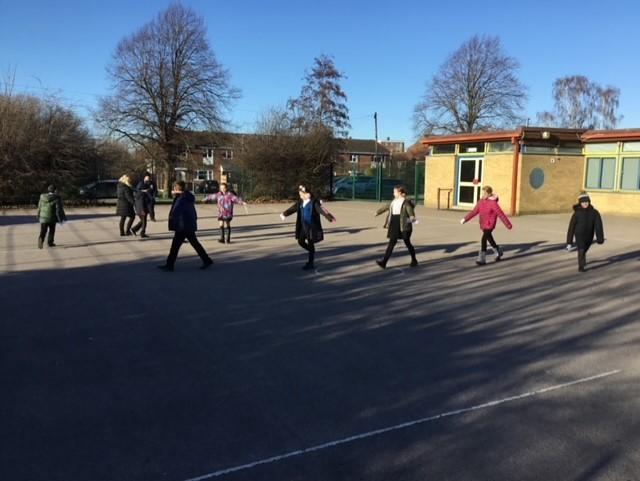
We then researched some information about our planet such as the size, distance away from the sun and how long it took to orbit. The children then had to use what they had found to choose a piece of fruit to replicate the size compared to the sun (yoga ball). We then went into the hall and used toilet paper (1 piece represented 90 million km) to measure and place the planets in the correct distance and order from the sun.
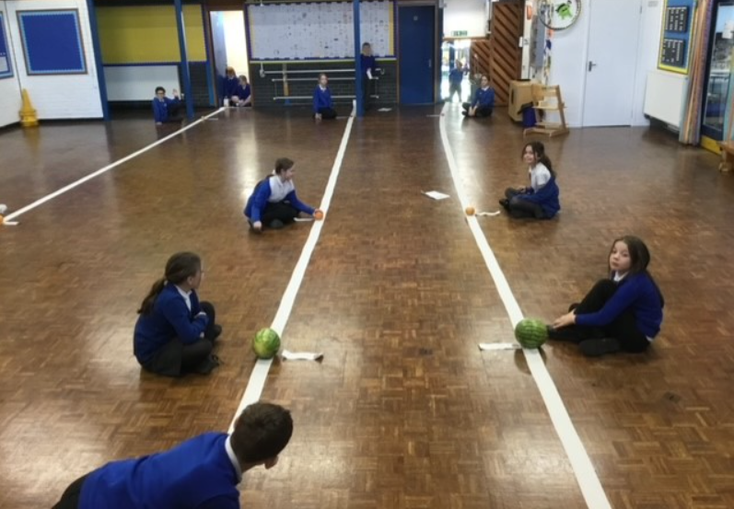
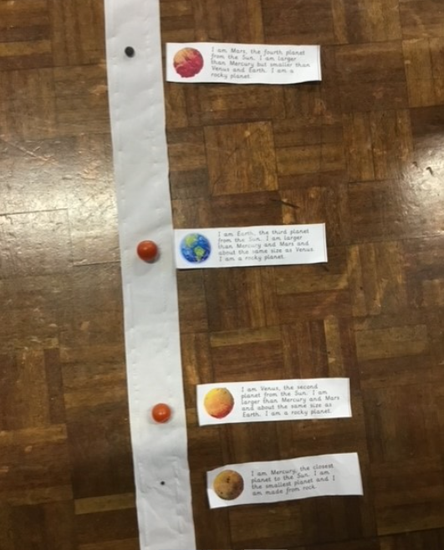
Week Beginning 8th January
Welcome back! I hope you all had a wonderful Christmas break. The children have come back to school amazingly! We have got straight back into our learning and have all been working super hard!
Just a little update from the first week back:
In English, we have started a new text called 'Pugs of the Frozen North'. The children have already been really enjoying the story and are eager to read more! They have made predictions by inferring from the front cover and images, identified and written figurative language (similes, personification, metaphors, onomatopoeia and alliteration) and have written incredible show don't tell sentences!
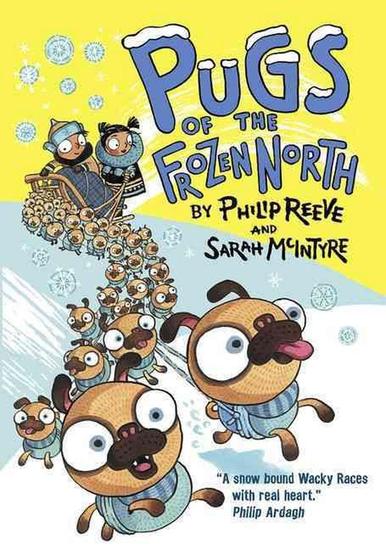
We finished our multiplication and division topic in Maths by recapping methods and solving word problems. We have moved onto our fraction topic where the children have learnt to multiply unit fractions, non-unit fractions and mixed number fractions by integers.
In Science, we have started a new topic of Earth and Space. To begin the topic, the children shared what they already knew and learnt about the heliocentric and geometric models.
Our History topic is the Tudors and the children begun the topic by inferring from portraits of Henry VIII. We also have a History Off the Page day on Tuesday 23rd January.
This week, we also had a workshop from the NSPCC about speaking out and child line.
I have attached (above) our overviews for the Spring Term which outlines all subjects and what the children will be learning.
